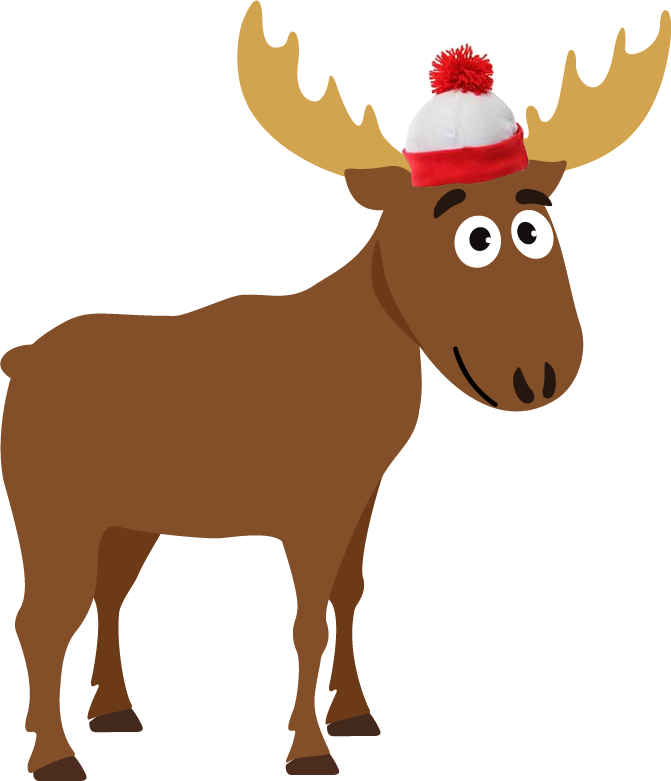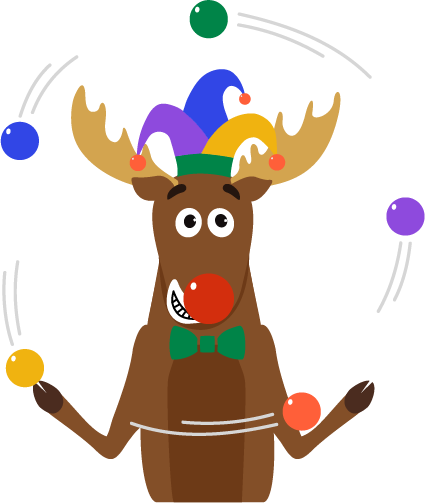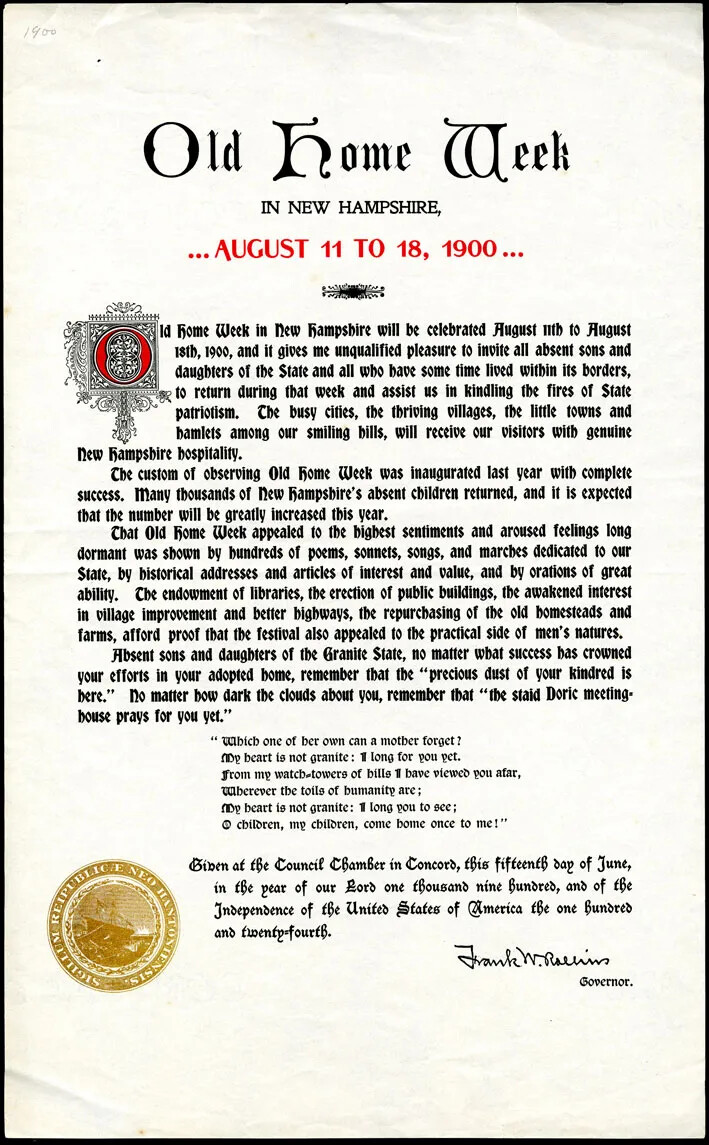Farming has been important to New Hampshire for centuries. It was how people earned their living and supported their families. Farm life shaped the culture here. People organized their lives around the effort to raise crops and produce agricultural goods.
As you learn about farming in New Hampshire during this period, keep in mind the following questions:
- How has farming changed in New Hampshire from the colonial period to industrialization?
- How did the changes in farming from the 1600s to the 1900s reflect economic changes?
- How did changes on the farm change people’s lives?
- THE FIRST FARMERS
- FARMING FOR THE FAMILY
- FARMING FOR THE MARKET
- THE DECLINE OF THE NH FARM
- FINDING NEW MARKETS
The First Farmers
When did farming develop in New Hampshire?
For thousands of years, the people who lived on the land we call New Hampshire spent much of their time finding enough food to support themselves and their families. For a long time, that meant hunting animals and gathering plants that grew in the wild.
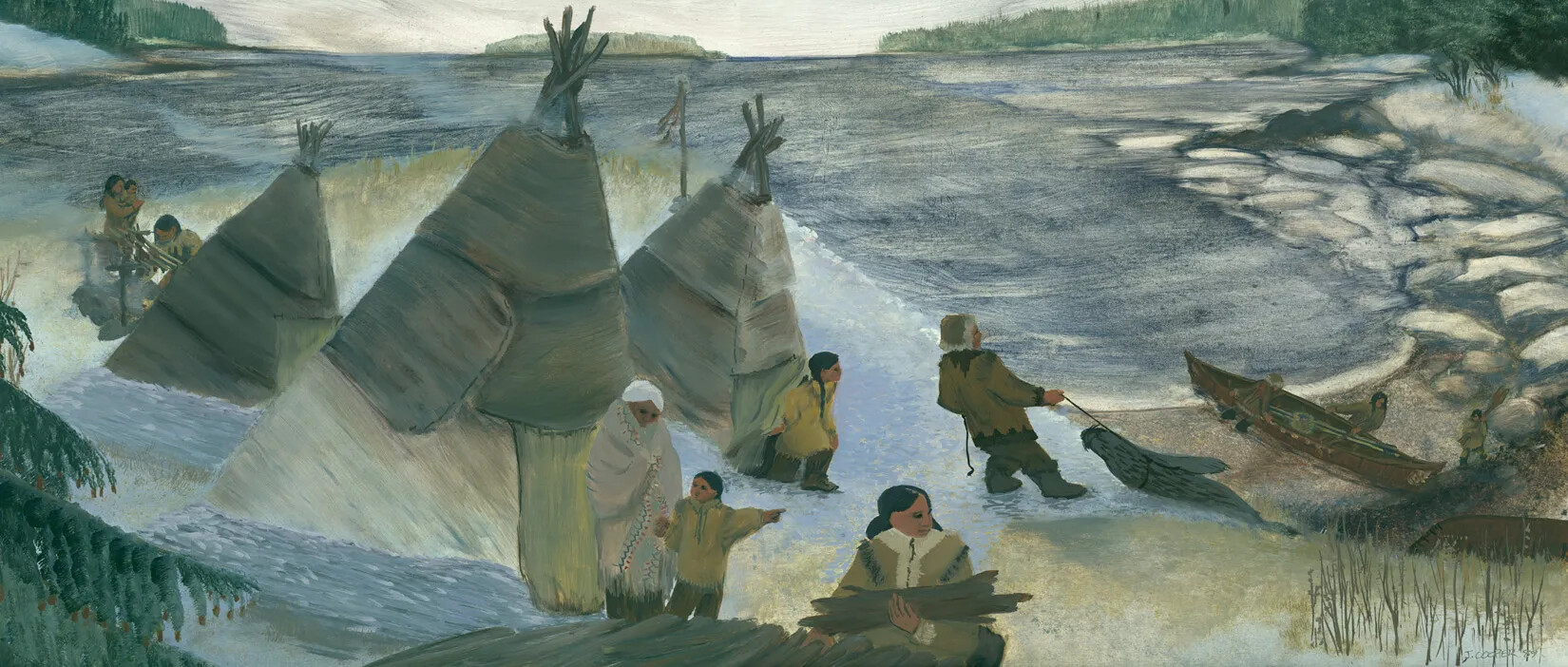
Caption:
This painting was made in the 20th century to show what a Wabanaki camp may have looked like about 3,000 years ago. The artist used traditional Wabanaki knowledge, and knowledge about the natural world, to create her interpretation. This painting shows a camp on the coast of Maine. Abenaki camps in what is now known as New Hampshire, especially on the seacoast, would have had some similarities with this camp. Notice how everything the people use is made from the natural world around them.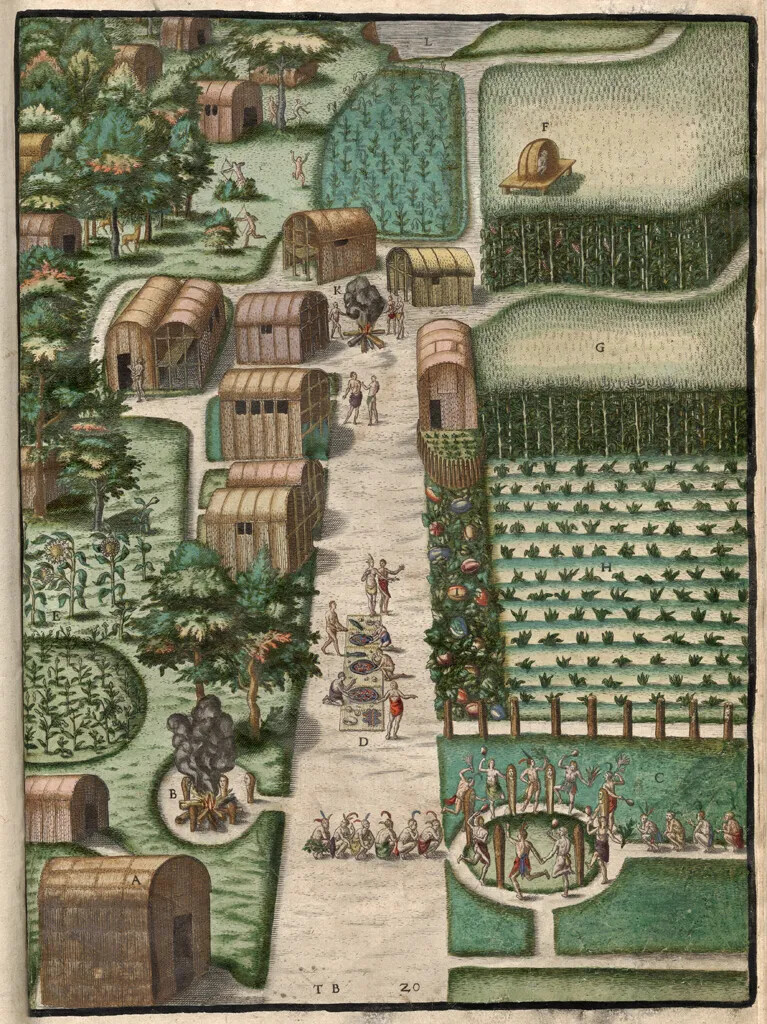
Caption:
This image is from a book written by English explorers. It shows an indigenous village in what is now called Virginia. Notice the fields of crops in the picture. The indigenous people have planted corn and other crops to harvest and eat. They stored the leftover crops to eat during the winter. Indigenous people have been growing crops for thousands of years.Caption:
The Abenaki were originally hunters and gatherers. They got their food by hunting and fishing and by gathering nuts and berries that grew in the forests. Then around 3,000 years ago, they began to grow crops to provide more food. Native tribes grew three kinds of crops—squash, corn, and beans. This trio became known as the “three sisters” because they were all grown together. The corn grew straight and tall, and the beans grew up around the corn stalks. The squash was planted at the base of the corn stalks, and its big leaves protected the base of the corn and beans, preventing weeds from growing or animals from eating them.But 3,000 years ago, the Abenaki began growing their own food instead of just collecting what plants they could find or what animals they could hunt.
The Abenaki cleared away trees and rocks and planted seeds in the ground to grow vegetables they could eat. As the plants grew, the Abenaki made sure the plants had enough water to survive, and they kept weeds from growing up around the plant. When the plants grew big and produced vegetables, the Abenaki harvested them and ate them. They stored the leftover food to eat during the long winters.
The Abenaki grew three main types of crops: corn, beans, and squash. They grew them all together and called these crops the “three sisters.”
The corn grew straight up as a tall stalk. The beans grew as a vine and wrapped around the corn stalk. And the squash grew big leaves that were low to the ground and protected the corn and the beans from weeds or animals.
The Abenaki still hunted and fished for a lot of their food, and they still gathered berries, fruits, and other things that grew in the wild. But the crops they farmed helped them grow more food to support themselves.
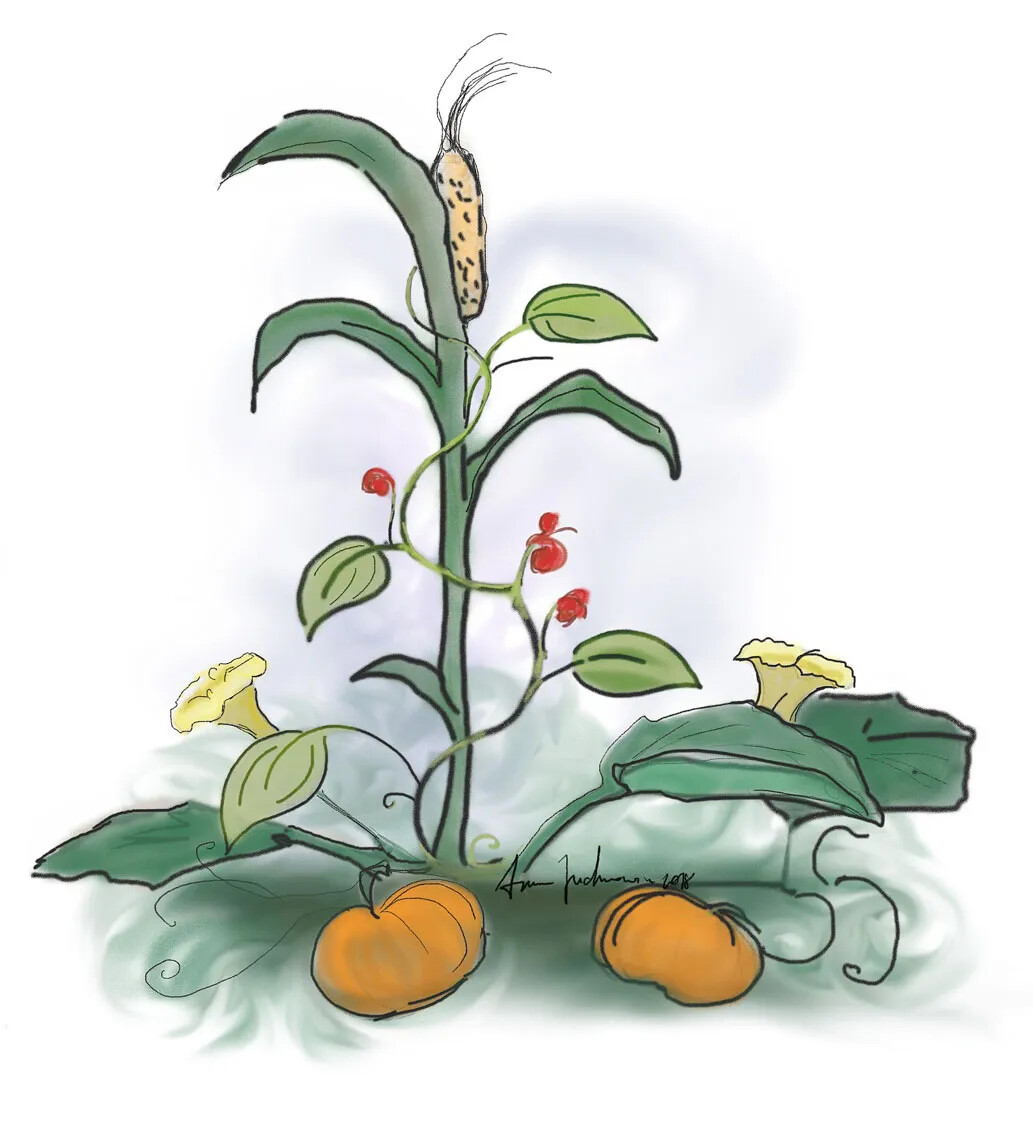
Caption:
The Abenaki used a farming technique known as the "three sisters." They planted squash, corn, and beans together. The corn grew straight and tall, and the bean vines grew up around the corn stalks for support. The squash grew at the base of the corn stalks, and its big leaves helped prevent weeds from growing.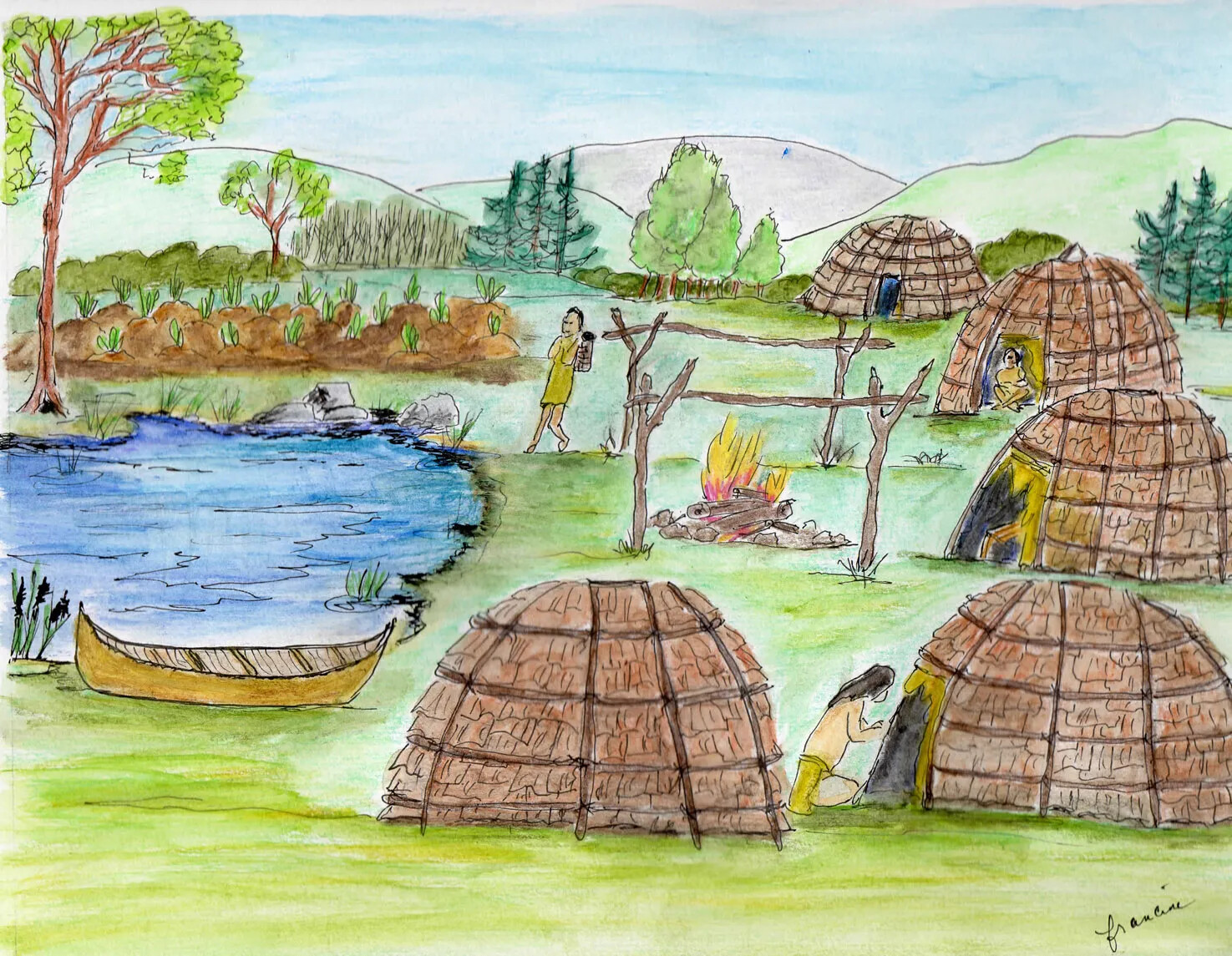
Caption:
Abenaki villages were always built close to a water source. In the village, the wigwams were built in a half-circle pattern, with a fire pit in the center. Around the edges of the village, the Abenaki planted crops to grow food. Some villages were very large, with hundreds of people living there.The Abenaki worked as a community to grow their food. People didn’t have their own crops or their own farms. Instead, the community had one field where all the crops were grown together.
The whole community helped raise the crops, and then they all ate what the crops produced. This practice is called communal farming.
What are the challenges of farming in New Hampshire?
The Land and the Elements. Farming in New Hampshire was very hard. Many crops did not grow well in New Hampshire’s rocky soil. And there were so many rocks! Anyone who wanted to farm in New Hampshire had to dig up hundreds or even thousands of rocks and move them out of the way to clear the fields for planting.

Caption:
Farming is challenging in New Hampshire because of its rocky landscape. Before there were machines, farmers had to dig all of the rocks out of the soil by hand! They had to move them out of the fields so they could plant their crops. It was a lot of hard work.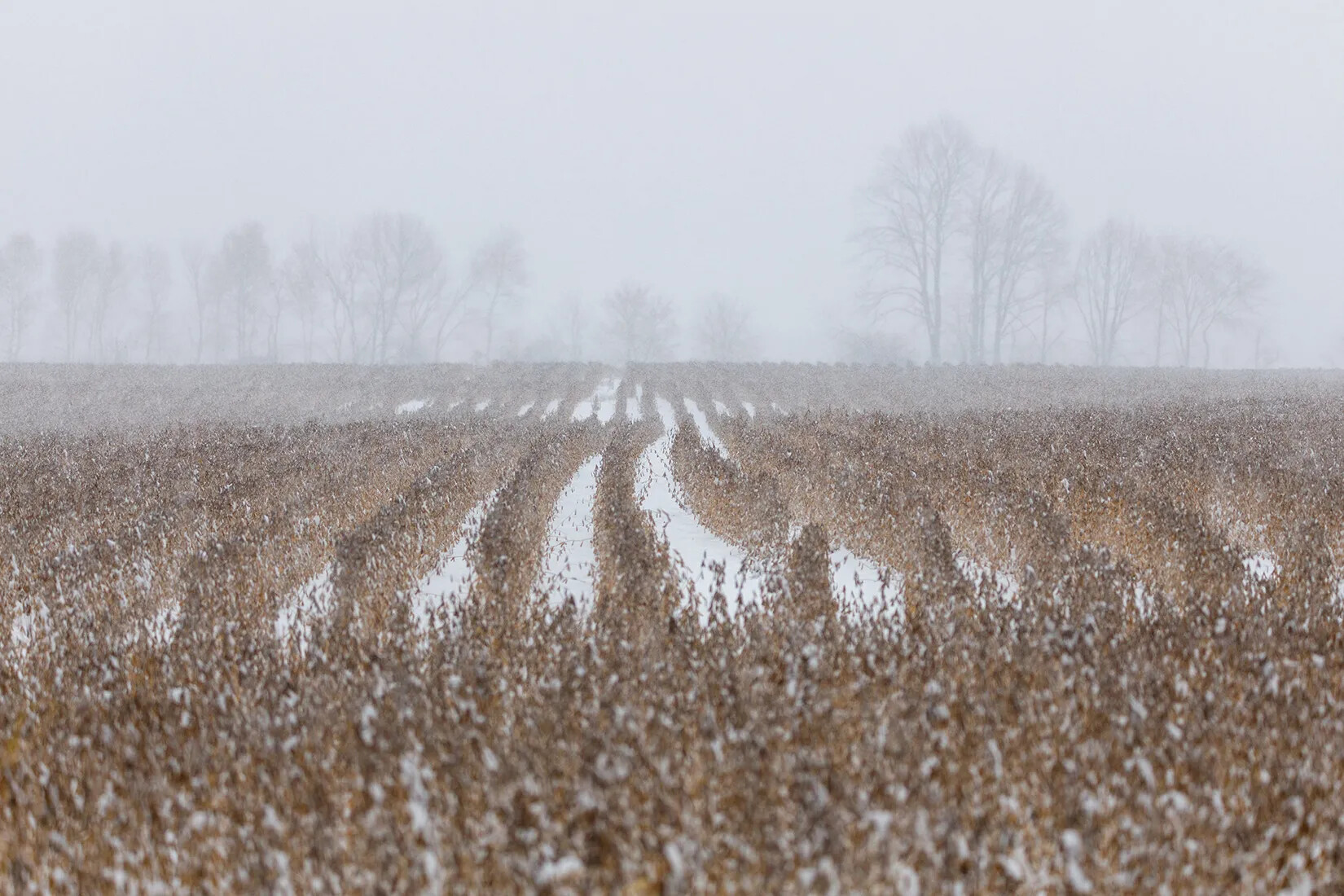
Caption:
Farming is challenging in New Hampshire because of the weather. The growing season is shorter than many other areas of the country. It finally warms up in May, but gets cold again starting in October. Too much rain or not enough rain prevents crops from growing. Plus, a windstorm or icestorm could damage crops. Farming is hard work!The growing season is also very short in New Hampshire compared to other places in America. Crops don’t start growing in New Hampshire until May, which is when it finally warms up. But by October, it’s pretty cold again, so crops don’t grow well in the fall either. With a short growing season—only about 100 days—crops did not grow very big or produce very many fruits and vegetables.
Weather was a constant concern for people who farmed, as the conditions needed to be just right for things to grow. Too much water or not enough water could destroy crops. A windstorm or ice storm could damage the crops as well.
Because the crops might fail, people who farmed in New Hampshire learned to rely on other kinds of food, such as hunting, fishing, and gathering berries and other plants that grew in the wild.
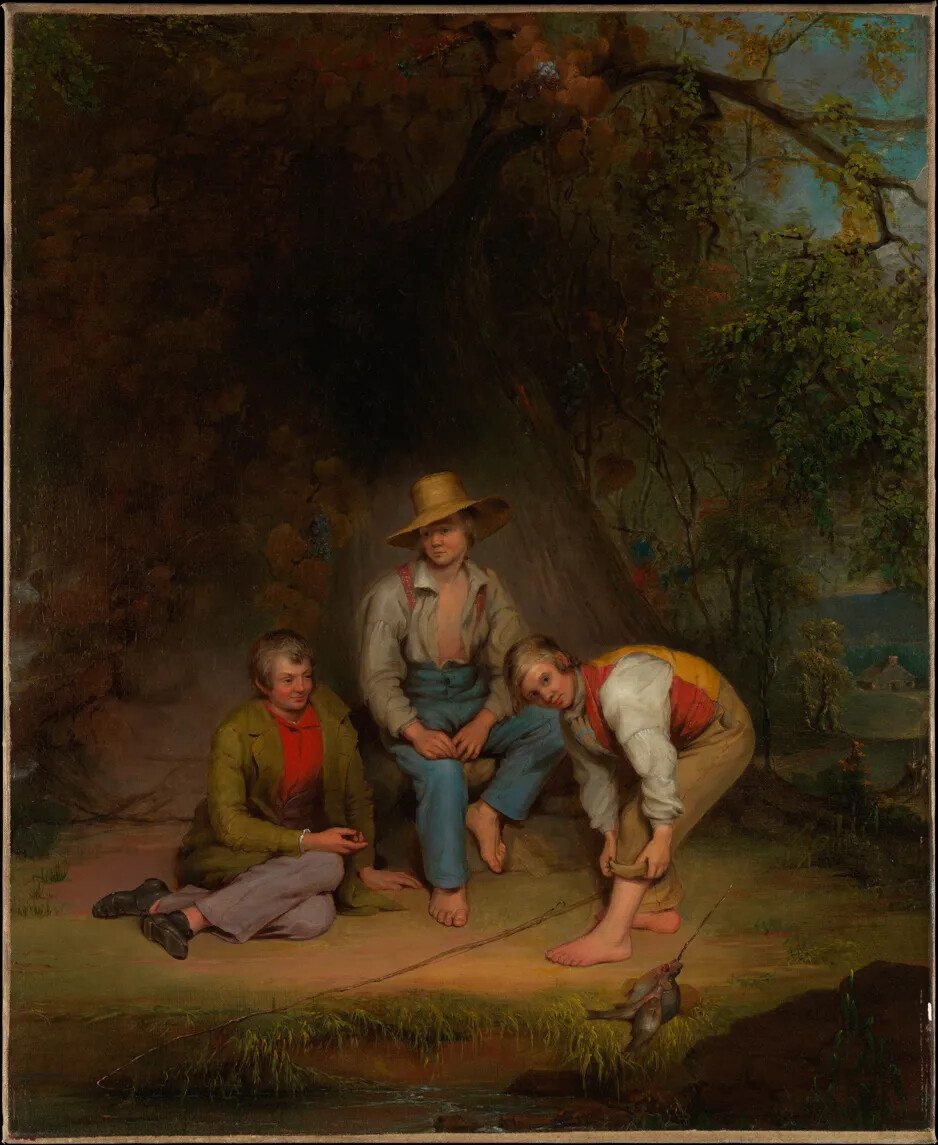
Caption:
Fishing has been popular in New Hampshire for thousands of years. Fish were an important source of food for the indigenous Abenaki people during the woodland period. Fishing was an important economic activity for the early English settlers, because they shipped the fish back to Europe to sell. For a long time, farmers fished, hunted, and gathered wild fruits, because they could not always rely on the crops they grew. And of course fishing is a fun recreational activity and sport that people do throughout New Hampshire today! Do you like to fish?Let's Review!
What are the big ideas in this section?
The First Farmers
The Abenaki began growing crops in New Hampshire 3,000 years ago.
The Three Sisters
The Abenaki grew squash, corn, and beans, which together are known as the Three Sisters.
Communal Farming
The Abenaki planted their crops as a community and worked together to grow the food they needed.
Farming and the NH Climate
New Hampshire has a short growing season, rocky soil, and unpredictable weather, which makes it hard to grow crops.
Farming for the Family
What was farming like for the colonists who came to New Hampshire?
The first English settlers settlers arrived in New Hampshire in 1623, when New Hampshire was a British colony. When they got here, they were interested in gathering New Hampshire’s natural resources, shipping them back to Europe, and selling them. These settlers harvested mostly fish, beaver fur, and trees.

Caption:
A seal is a mark on a document to make it official. The first state seal shows some important symbols of New Hampshire. On the left is a codfish. On the right is a white pine tree. In the middle there are five arrows bound together. At the time this seal was created, there were five counties in New Hampshire. This was the first seal designed after New Hampshire and the rest of the original 13 colonies declared independence from England in July 1776. The words on the seal are in Latin. Sigill rei pub Neohantoni means "seal of the state of New Hampshire." Vis unita fortior means "a united force is stronger."
From 1623 until 1776, New Hampshire was a colony of Great Britain. Great Britain is a country in Europe, which is on the other side of the Atlantic Ocean. Great Britain ruled over many colonies in America during these years. The king of Great Britain decided what laws would govern America during this colonial period. Most Americans were happy living under British rule for a long time, but eventually Americans decided that they wanted to govern themselves and make their own decisions. They declared their independence from Great Britain and fought a war, called the American Revolution, to break away from British rule. All of the colonies became states and set up state governments. After the Americans won the war, they came together to form their own government for the entire country, which is called the United States of America.
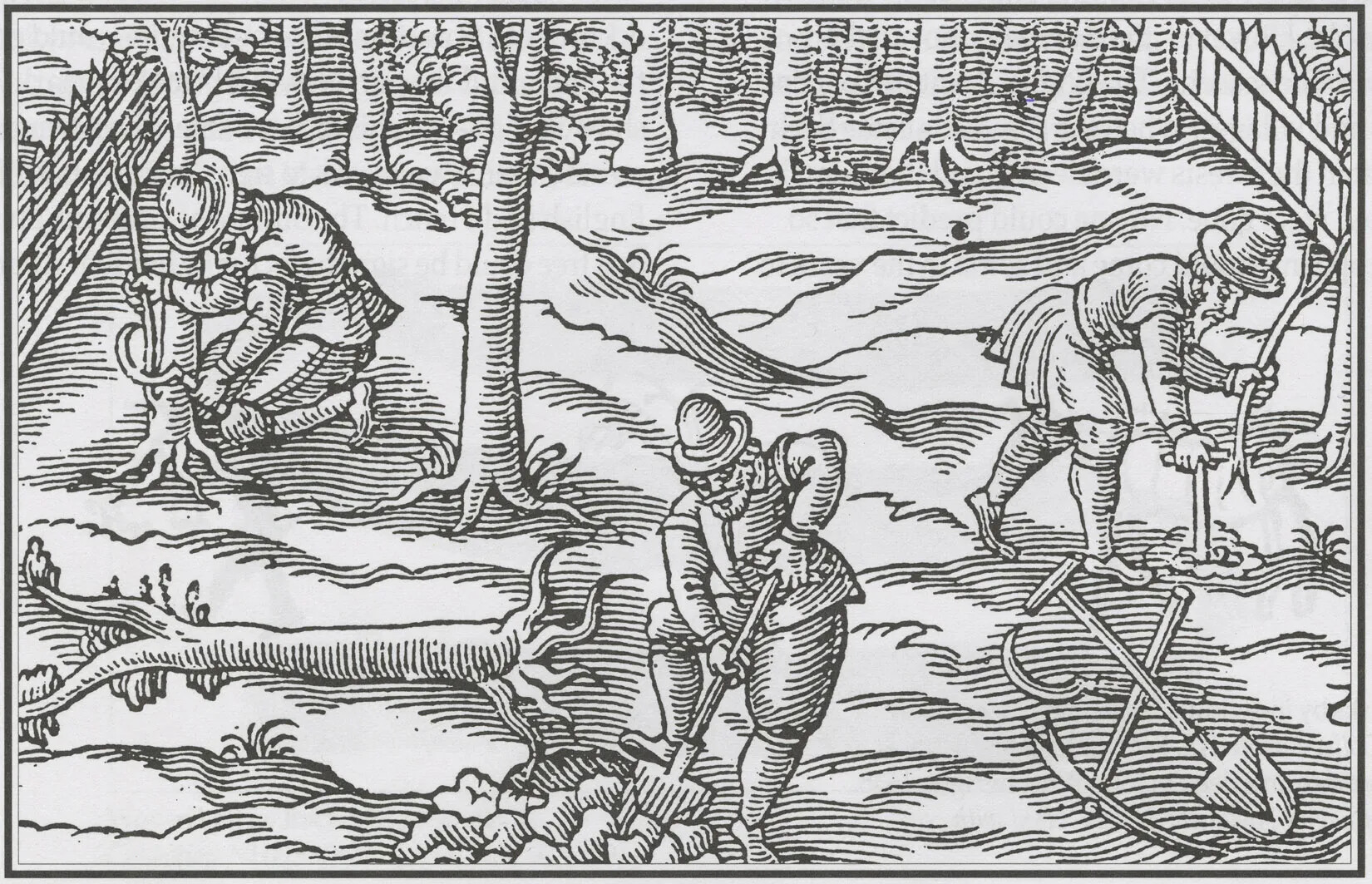
Caption:
Almost every English settler in New Hampshire grew some crops, even if they also worked in other industries. They needed to grow food to eat as well as trade with others. They grew wheat, corn, and barley, vegetables like beans and squash, and also had apple orchards.But the English settlers also needed food to survive. Almost all of them farmed the land, hunted animals, fished, and gathered fruit and nuts to eat.
The Abenaki taught the English settlers how to survive in New Hampshire, including which crops grew best here, like the “three sisters.”
The first English settlers followed the same practice as the Abenaki and grew their crops as a community. But as their towns grew and became more settled, the colonists began claiming their own land to farm privately.
Farming involved everyone in the family. Men and older boys worked in the fields and with large animals like horses, cows, oxen, and sheep. Women and older girls took care of the house, sewed clothing, tended the garden, prepared all the food, and watched over the children. Even very young children had important jobs to do on a farm, such as taking care of small animals like chickens or helping their mothers around the house. Family farming replaced communal farming.
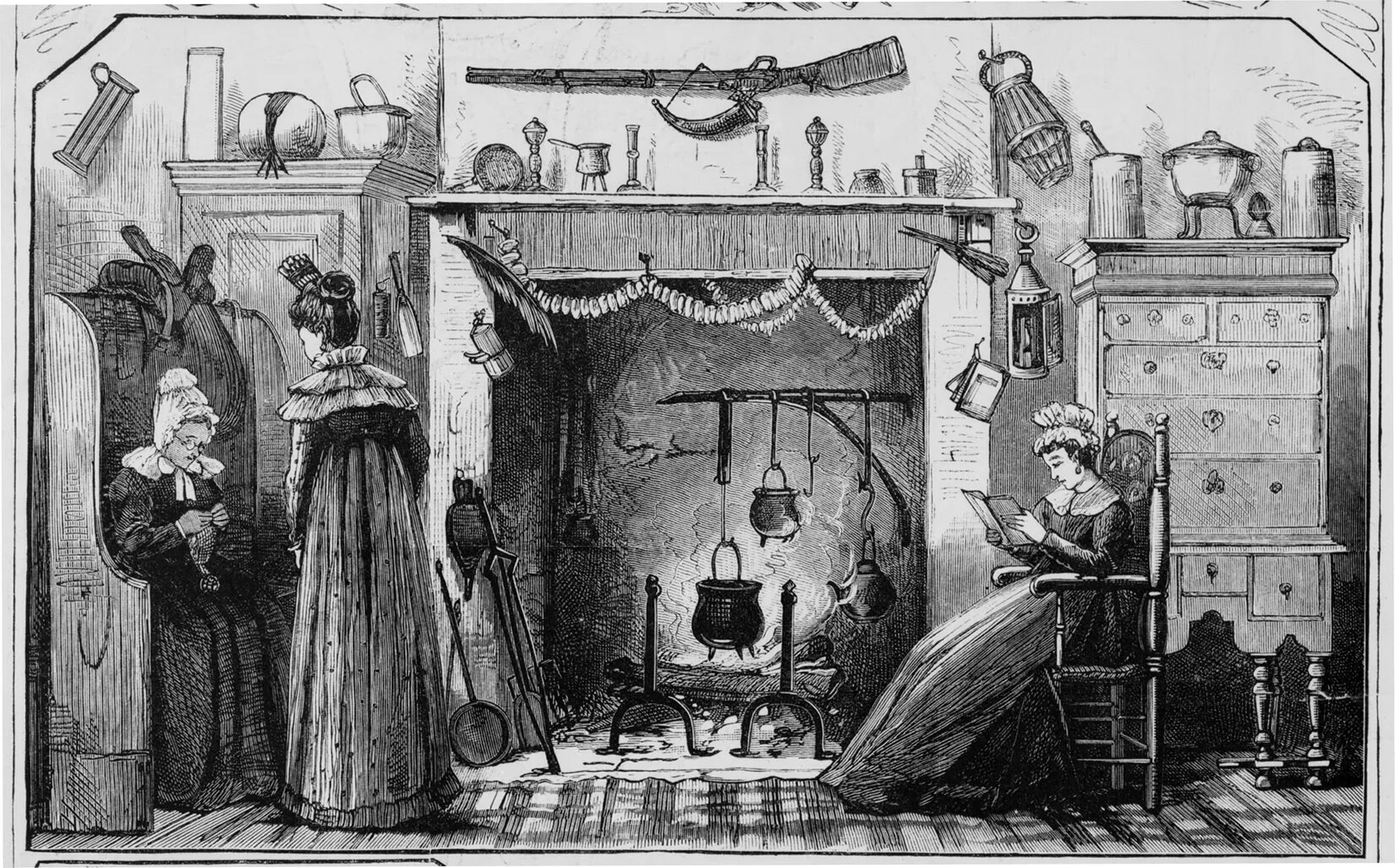
Caption:
This illustration shows a typical 17th or 18th century New England farmhouse. Notice the kinds of work the women are doing. The farmhouse in the picture is a replica, or reproduction, from an exposition or big fair called the Centennial Exposition. It was held to celebrate the 100th birthday of the United States in 1876.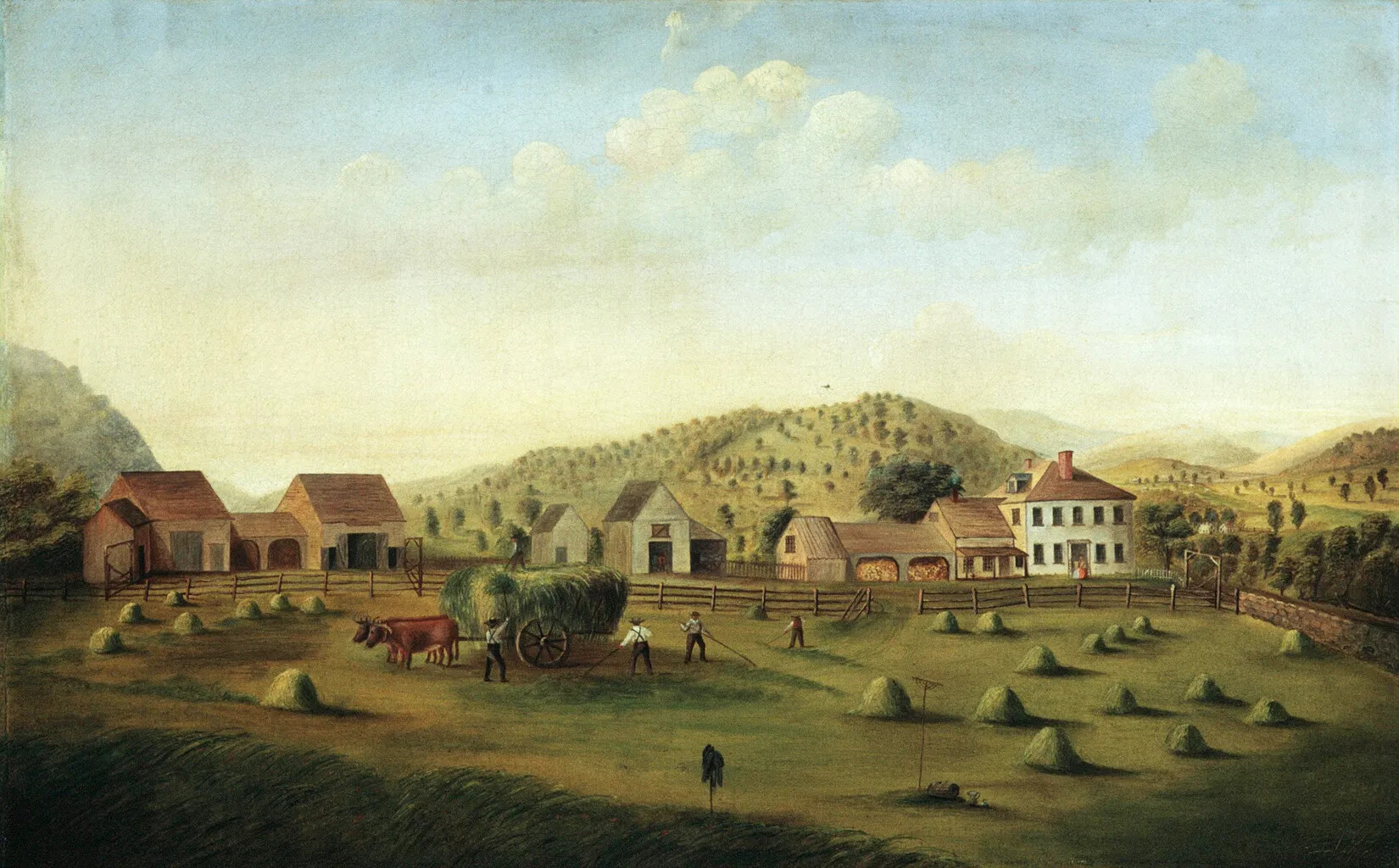
Caption:
Farming has a long and important history in New Hampshire. In the woodland period, the Abenaki planted crops. The early English settlers had to grow food to eat. Until the early 1800s, nearly everyone in New Hampshire was a farmer! Granite Staters grew all sorts of crops, including grains like wheat and corn, vegetables like squash and carrots, and they had orchards of apples and pears. They also raised livestock, like sheep, cows, and chickens, to provide milk, eggs, and meat. Agriculture continues to be important in New Hampshire today. This painting shows a very typical farmstead near Claremont, New Hampshire, in the early 1800s.
When the Scots-Irish arrived in New Hampshire, they brought with them a new kind of vegetable called a potato. Potatoes had long been popular in Europe, especially in Ireland. In fact, many people in Ireland ate potatoes every single day! But potatoes were not grown in America then. In 1719, the Scots-Irish began planting fields of potatoes in New Hampshire. Some people say that these potatoes were the first ones grown in America.
Farms in New Hampshire produced many goods.
There were fields of crops like wheat, rye, or corn.
There were orchards of apples and pears.
There were lots of farm animals which were used to produce meat, leather, and other goods like wool (from sheep) or eggs (from chickens).
Farm families had gardens to grow all kinds of vegetables, like squash, lettuce, cucumbers, and carrots.
Farmers also hunted and fished to provide food for their families.
They also gathered wild fruit and berries.
And they kept bee hives to produce honey and made maple syrup from tree sap.
Most farmers in New Hampshire produced enough to support their families and often had some goods left over to barter with their neighbors or sell at market.
Although it was a lot of work to farm in New Hampshire, farmers produced enough food for people to survive and for families to grow. This kind of farming is called self-sufficient farming because farm families could take care of themselves.

Caption:
This painting shows a typical family farm in the late 1700s. Notice all the different activities the people are doing. The farm in this painting is located in Bucks County, Pennsylvania, but it is similar to New England farms during this time period.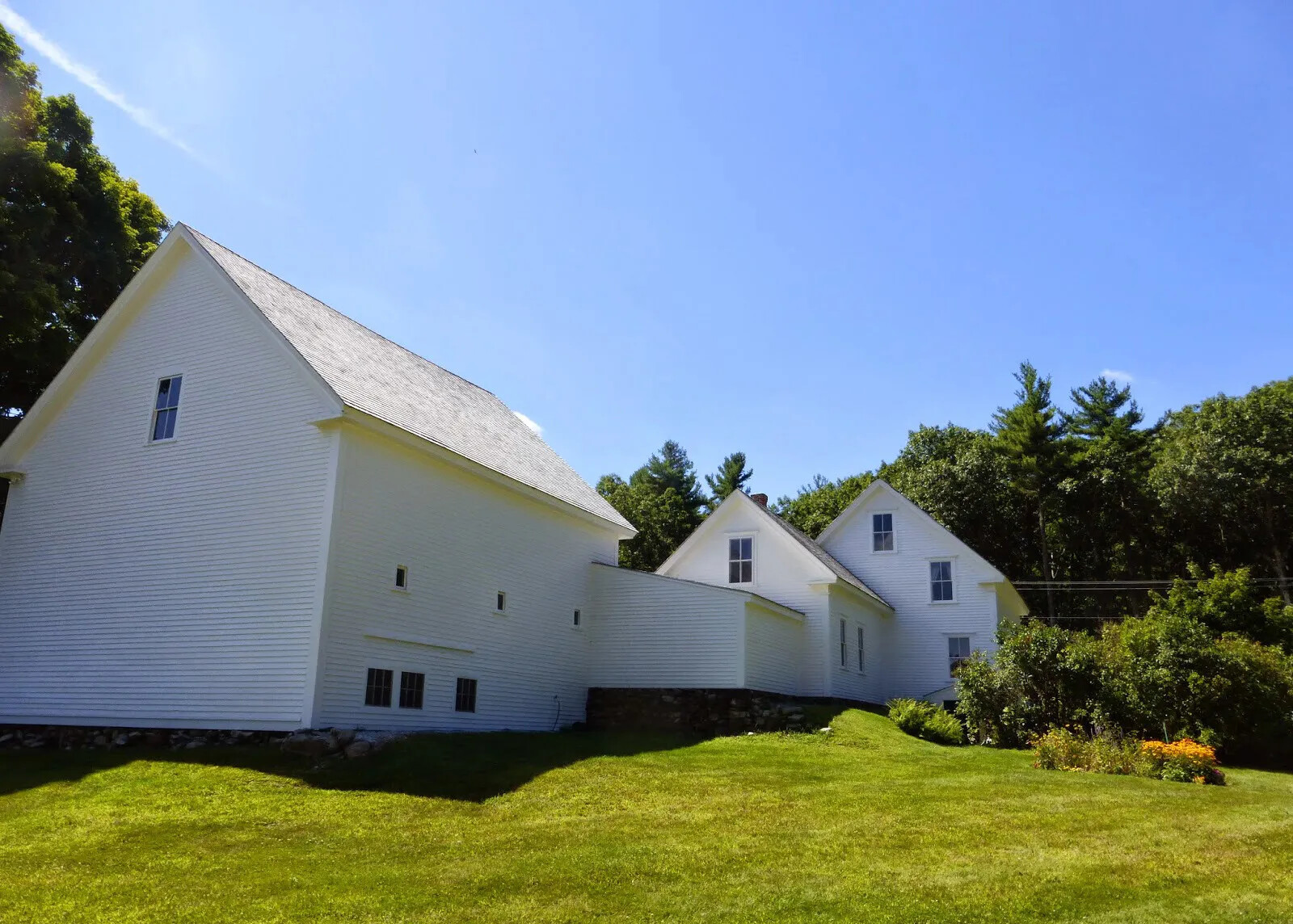
Caption:
This picture shows a connected farm. This type of housing style was popular on New England farms in the late 1700s and 1800s. Most farms started off with a small house but then added to it as the farm produced more goods. Farm families who were doing well built a bigger house onto the small house. Sometimes they also built a room that linked the house to the barn. This was called a connected farm because the different parts of the house are connected together. This was known as "big house, little house, back house, barn." This connected farm in Derry, New Hampshire, was built in the 1880s and later owned by the Frost family. A famous writer, Robert Frost, lived there with his family from 1900 to 1911.As their farms became settled and prosperous, farmers’ houses got bigger.
Most farms started off with a small house but then added to it. Farm families who were doing well built a bigger house at the back of the small house or built a room that linked the house to the barn.
These types of buildings are called connected houses because the different parts of the house are connected together.
Farmers also spent a lot of their time cutting down wood. They needed lumber to build houses and barns and to make things like furniture, barrels, and wagons. They also needed wood to burn in their fireplaces and stoves to keep warm in the winter and to cook their food all year round.
The farmers also needed to keep trees out of their fields so the crops had room and enough sunlight to grow.
Most people had to chop wood everyday, which was a lot of work!
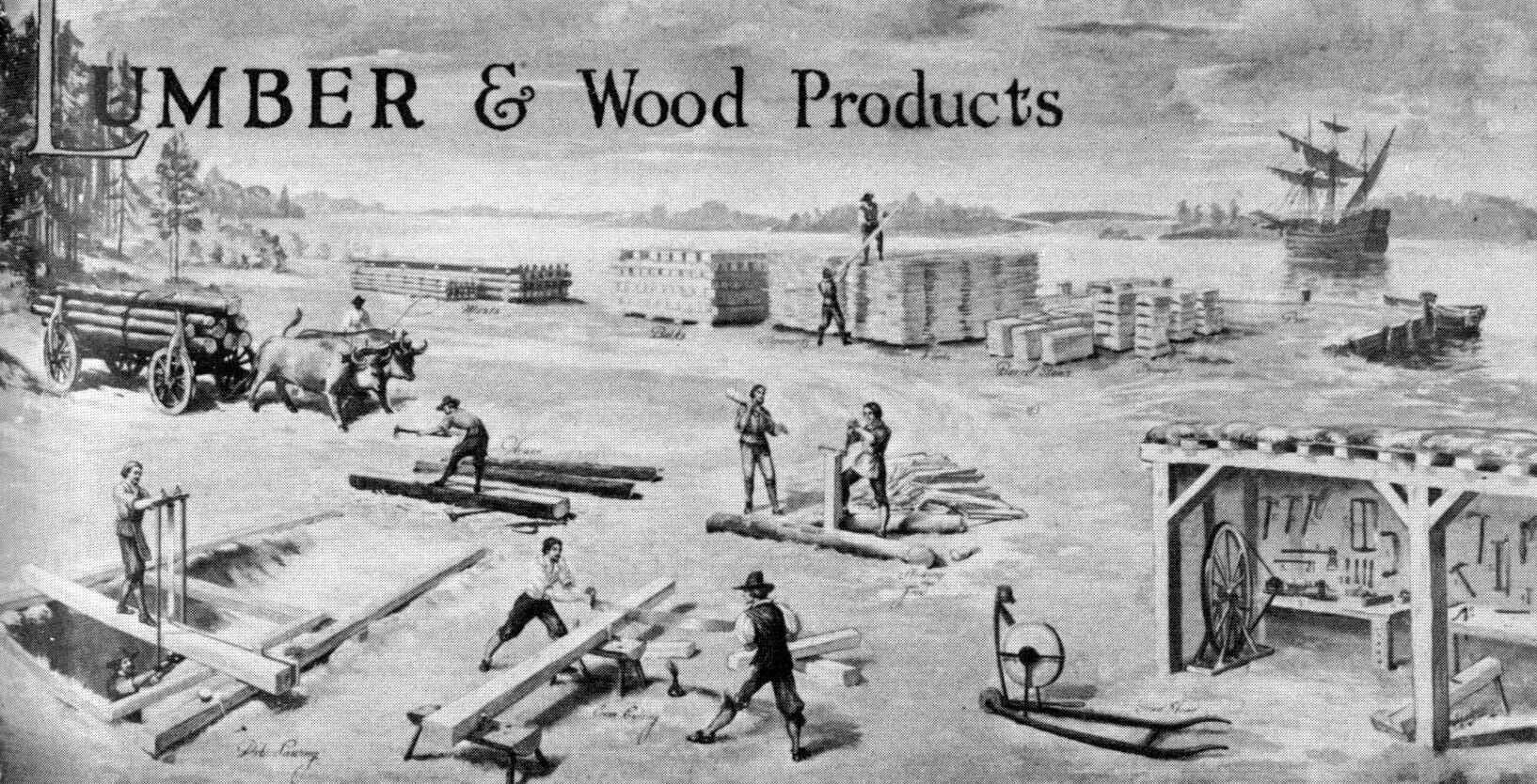
Caption:
This illustration shows the types of work that English settlers in the timber industry might have done. What do you notice about the kinds of things they may have built with the timber? How did they get the logs from the forest to their workshops? What did they do with the extra timber?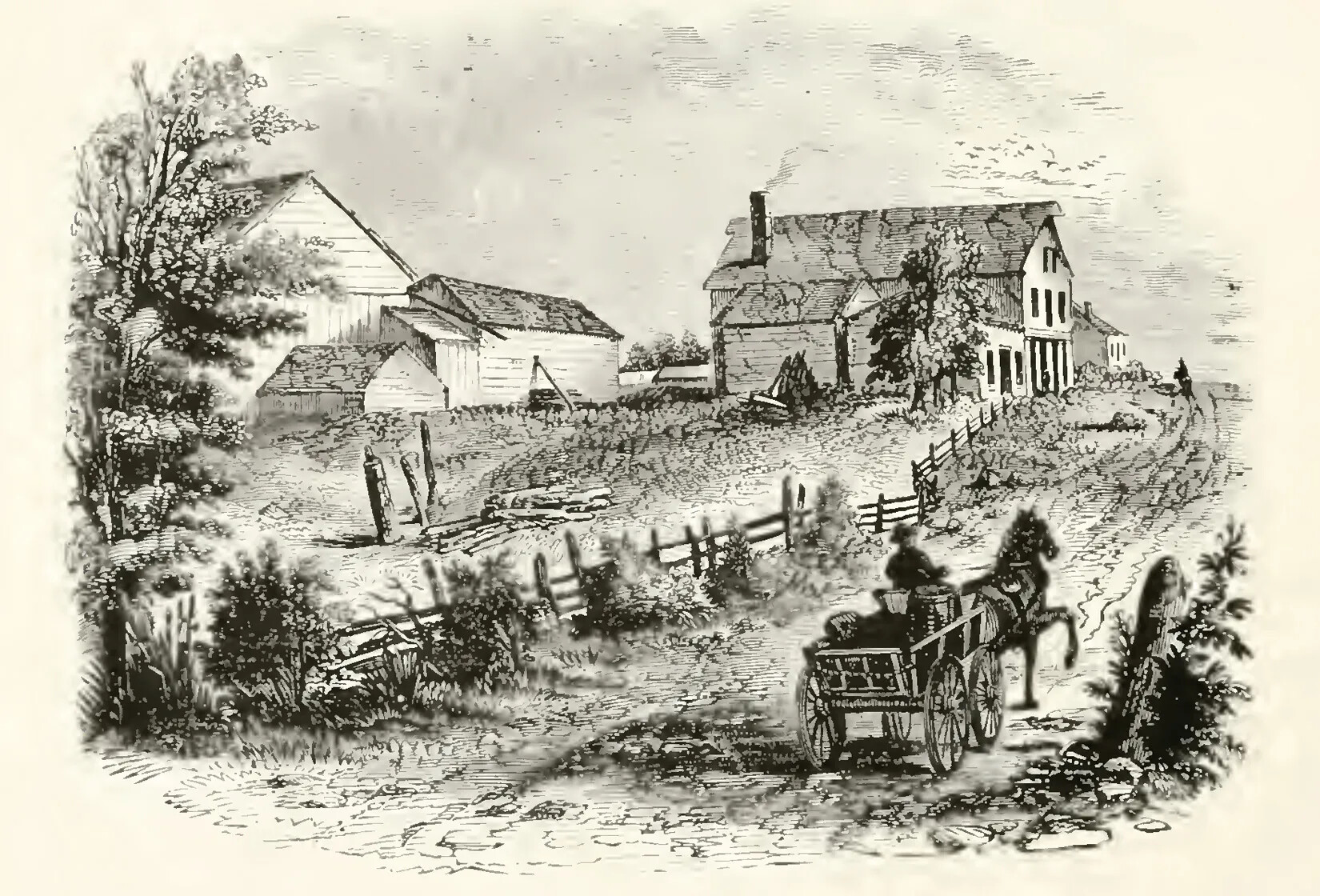
Caption:
This book illustration shows what a colonial farm would have looked like in the 1760s.For many people, their lives were focused on their farms and their towns.
There were not very many roads in the colonial period, so it was hard to travel very far, and it took a long time to get anywhere. Most people spent their time with their own families or with other families who lived nearby.
The whole town came together for town meeting once or twice a year, and they came together for church services, which were held all day long on Sundays.
Farmers and their families lived their lives by the seasons and the sun. They woke up in the morning just as the sun came up, and at night, they often went to bed as soon as the sun went down, since they were tired from working on the farm all day. Also, they only had candles and oil lamps for light, so it was hard to see to read or sew at night.
In the summer, when there was lots of daylight, they stayed awake longer. But in the winter, when the days are short, they slept more hours of the day.

Caption:
New Hampshire has four seasons: winter, spring, summer, and fall, which is also called autumn.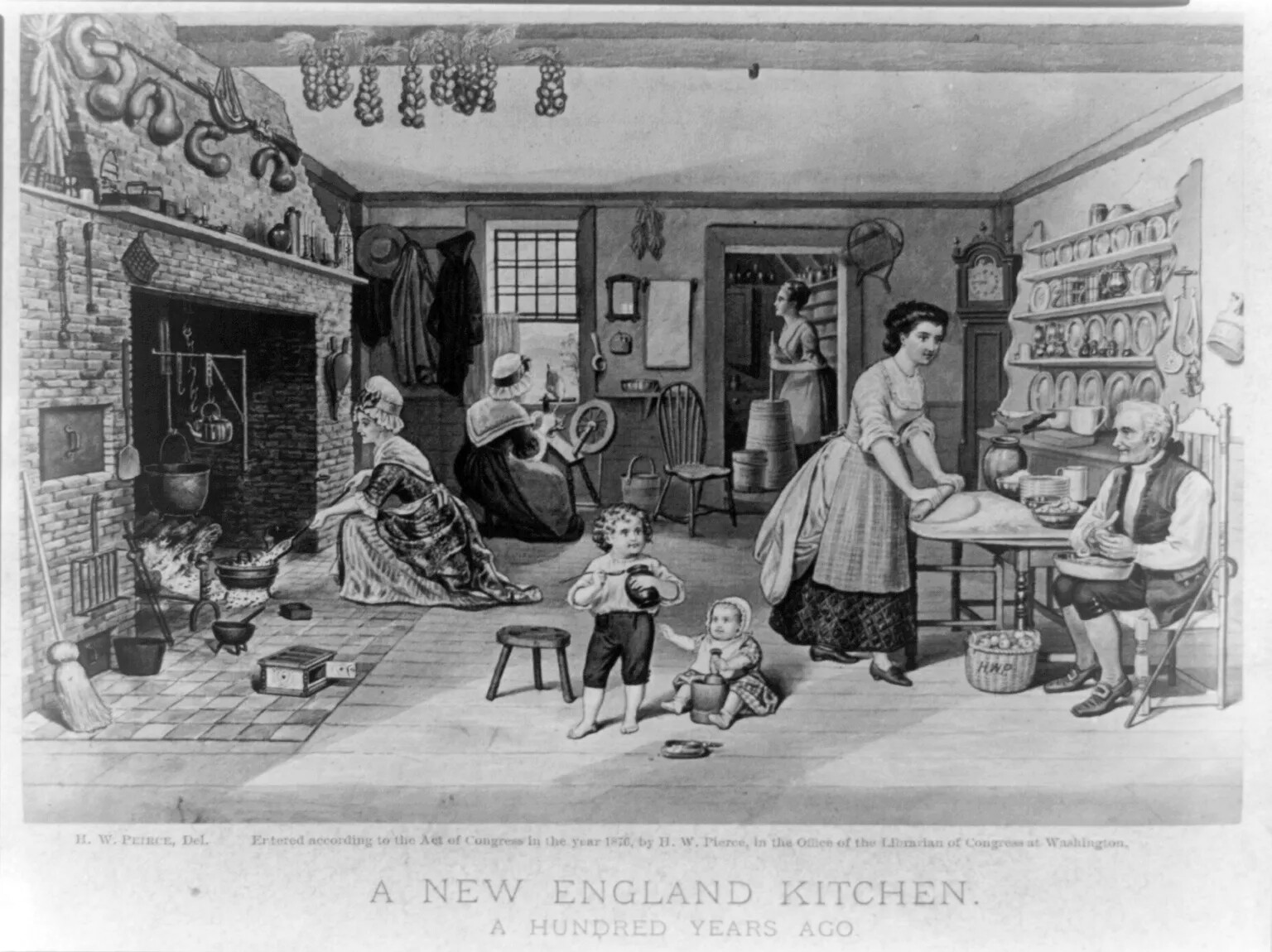
Caption:
New Hampshire farm families in the late 1700s and early 1800s were focused on their farms and their towns. The kitchen was the center of the home. People didn't have family rooms or living rooms like many houses have today. The kitchen fireplace, or hearth, provided heat for the house. It was also where the women cooked all the meals. What kinds of other work are the different family members doing in this picture?Their lives were very different in each season.
In the spring, farmers were busy planting crops and gardens.
In the summer, life slowed down a little bit. They still had to take care of what was growing in the fields, but it was less work than planting the crops.
Then in the fall, things got busy again, as they had to harvest the crops and get their farms ready for the winter. Once the harvest was in, life slowed down in the winter, as they couldn’t grow more crops until the spring. There were still chores that needed to be done on a farm all year round, like taking care of the animals, sewing clothing, cooking, and cleaning.
With so many farmers in New Hampshire during the 17th century, 18th century, and early 19th century, New Hampshire was very rural in this period. Most families owned lots of land for their farms.
Towns usually had 40 or 50 families, spread out across the entire town. They came together in the town center, which usually had a meeting house for the community for town meetings. The meeting house also served as the town’s church and school. Town centers had cemeteries and usually a sawmill and a gristmill too. Larger towns might have a tavern or inn, but there weren’t stores or restaurants like we have in towns today.
Farmers produced everything they needed or traded with their neighbors.
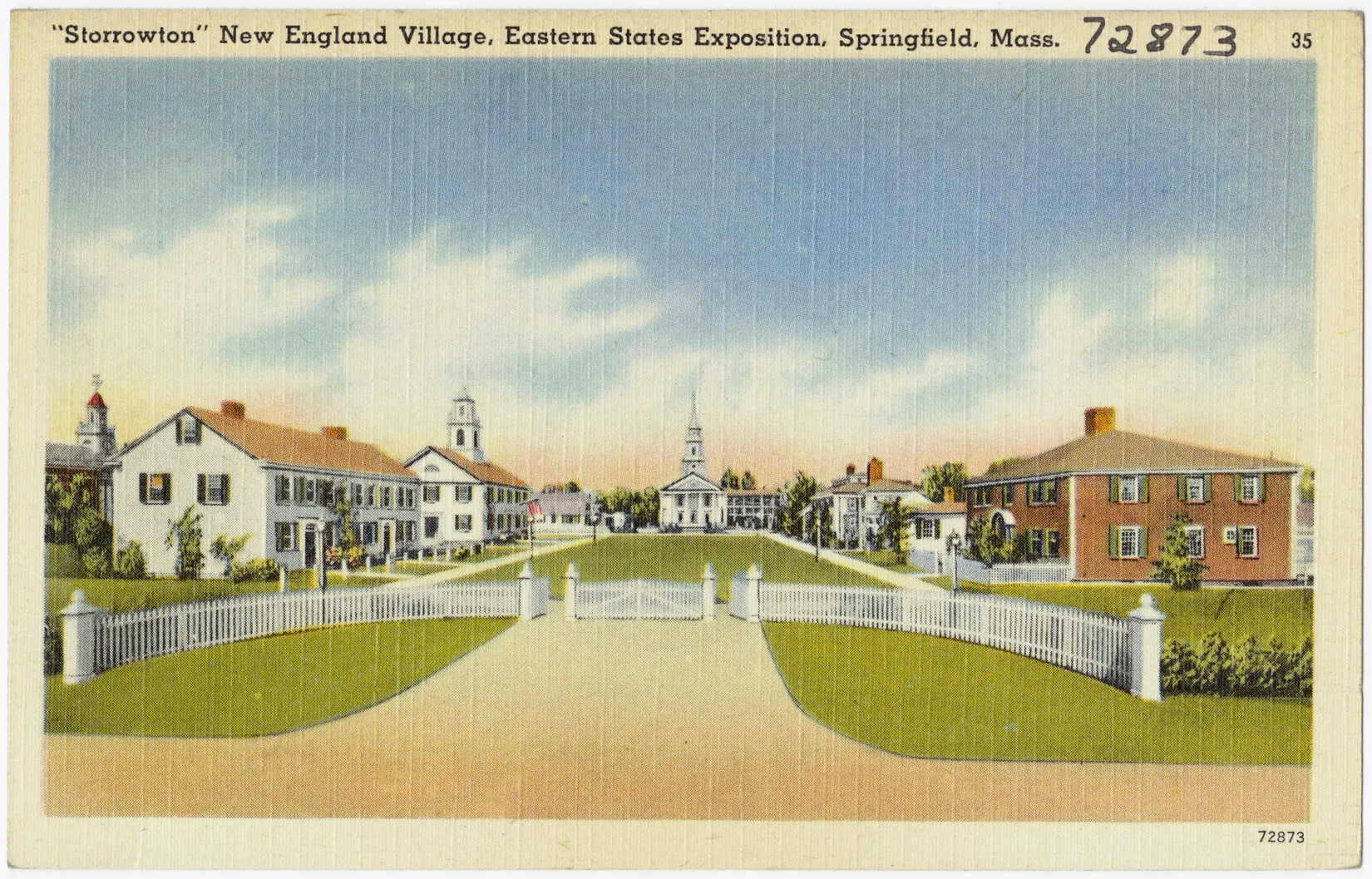
Caption:
This postcard shows a typical colonial New England village. Notice that the main public buildings, like the meeting house or church, were centered around the town commons. A commons is a public area, usually flat and grassy, that is used by all members of a community. Storrowton Village Museum is a recreated village of 18th and 19th century buildings from Massachusetts and New Hampshire. All of the buildings were originally located in different places, but they were moved to Springfield, Massachusetts, and set up like a colonial village. That way modern visitors can see what it would have looked like in the 1700s and 1800s.Let's Review!
What are the big ideas in this section?
Colonial Farmers
Almost everyone who lived in NH during the colonial period grew their own food on farms. These farms produced many different kinds of goods.
Family Farming
Each family owned its own farm during colonial times. All the family members worked on the farm, even the children.
Self-Sufficient Farming
Most colonial farms produced enough goods to support the families who lived there. As their farms prospered, colonial farmers built bigger houses.
Life Centered on Farming
Life in NH towns centered around farming since everyone lived on farms.
Farming for the Market
How did farming change in the 19th century?
The way people farmed in New Hampshire began to change in the early 19th century. Farming was still done by families, but farms started to produce different kinds of goods than they had earlier.
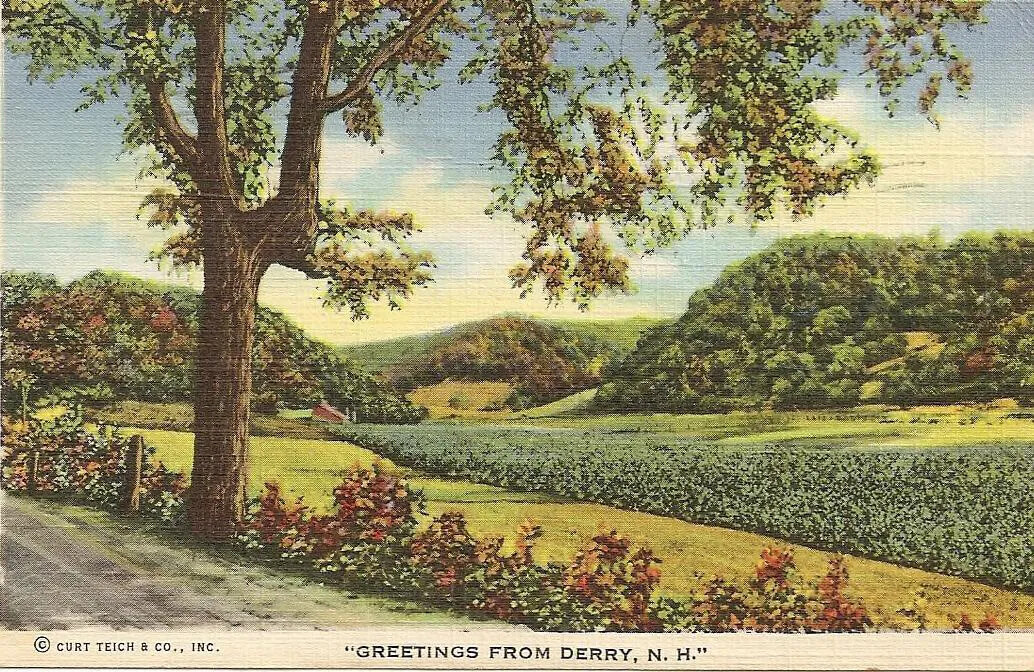
Caption:
The first settlers in the Merrimack Valley were Scots-Irish, people who were originally from Scotland, but had moved to Ireland. Beginning in 1719, many Scots-Irish moved from Ireland to New Hampshire. They wanted more land and to preserve their culture and religion. Many were farmers, and soon farm towns full of Scots-Irish settlers spread all over the Merrimack Valley.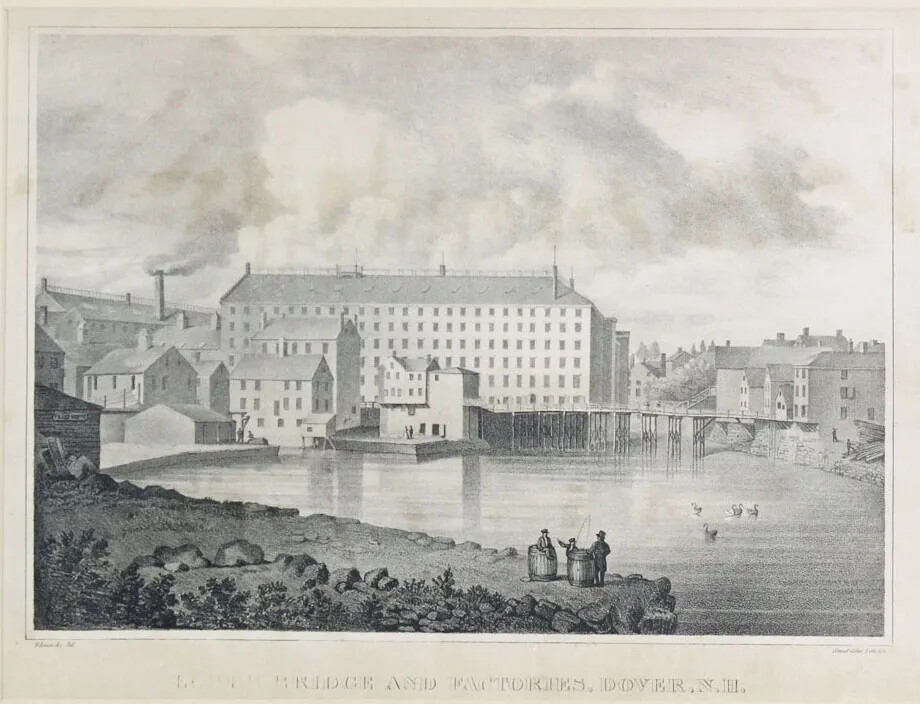
Caption:
The town of Dover, NH, has used the water power of the Cocheco River for centuries. In the 1600s it powered a sawmill and in the 1800s it powered cotton mills. This picture shows textile factories along the Cocheco River in the early 1800s.Industrialization. This change in farming had to do with the way the New Hampshire economy started to shift at this time.
People started using the rivers in New Hampshire to power machines, and they put the machines into large buildings called factories or mills. The factories made goods faster with the machines than people could make them by hand.
The most important product made in factories was textiles. People use cloth for all sorts of things, like clothing and bedding. In early New Hampshire, though, there weren’t stores where you could buy these things. Instead, families had to make these items themselves. Women did most of this work. They had to take the wool from sheep and turn it into clothing or other textile goods. Machines powered by water made it much faster to turn wool into thread and then weave the thread into cloth.
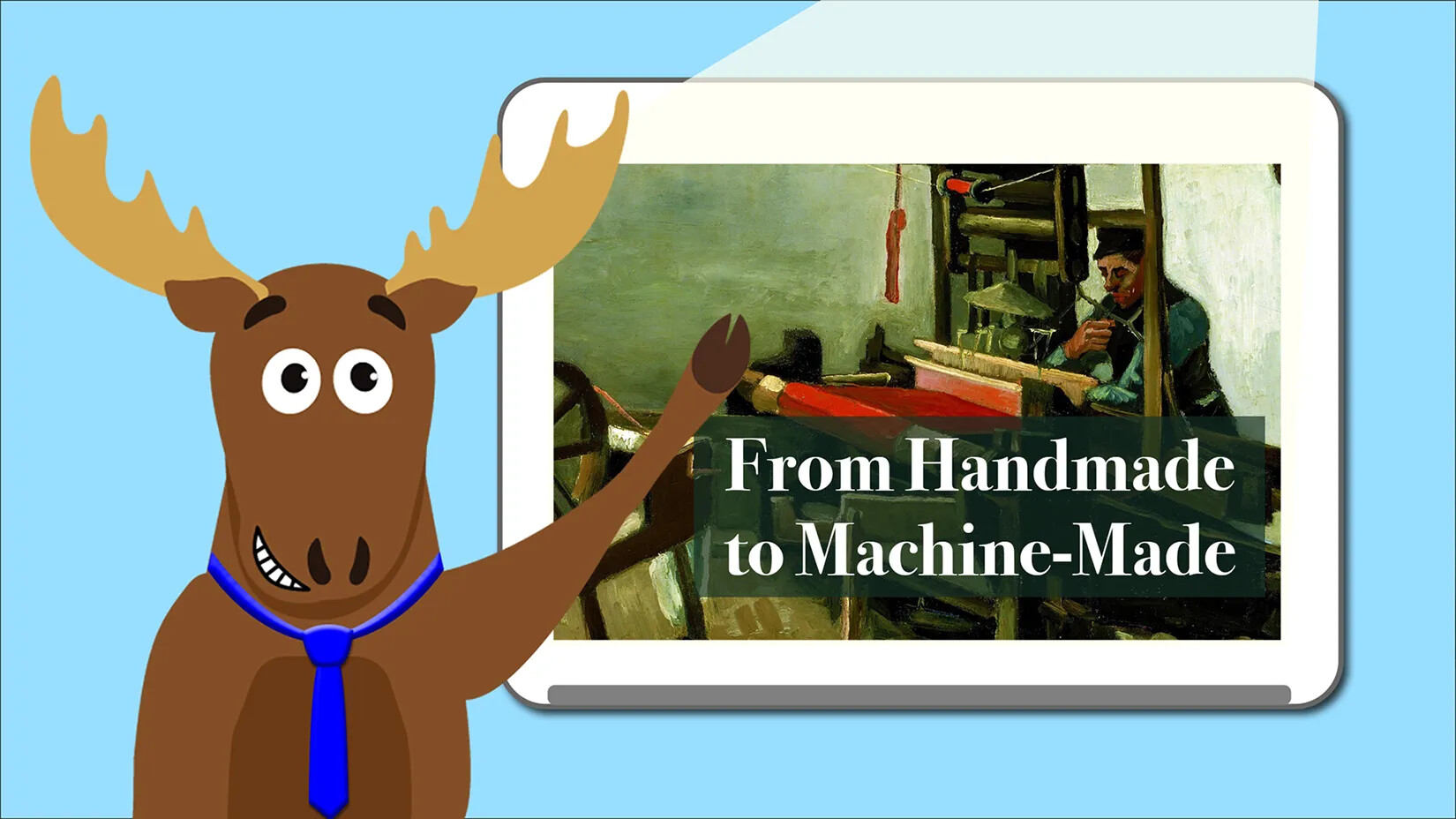
Mason Explains: From Homemade to Machine-Made
Making Cloth by Hand and Machine
The Great Sheep Boom. As the machines began making textiles faster and faster, the factories needed more wool. The farmers of New Hampshire and Vermont changed the way they farmed so they could provide factories with the wool they needed.
Many farmers stopped growing crops like wheat, rye, and corn and turned their fields into pastures where they kept flocks of sheep.
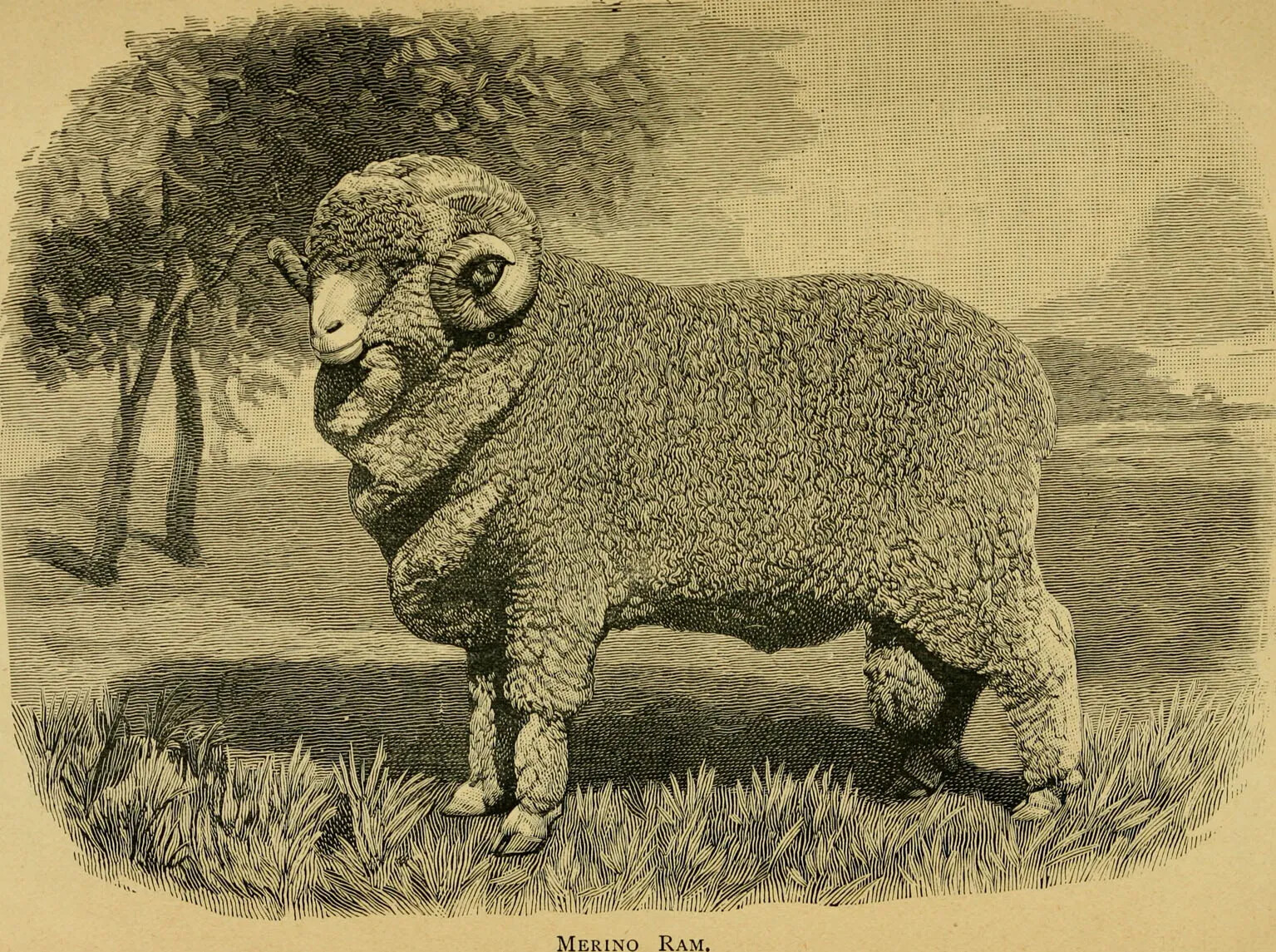
Caption:
In the early 1800s, many farmers in Vermont and New Hampshire started raising sheep. They could sell the wool from the sheep to the new textile factories. There were more sheep than people in New Hampshire! This is known as the Great Sheep Boom. Merino sheep were a popular breed of sheep to raise during this time. Merino sheep were known for being very sturdy and for producing fine wool.Caption:
The first cotton mill in New Hampshire was built in New Ipswich in 1803. It was a small mill, but it used giant machines, known as looms, to weave cloth, which would normally take a long time to weave by hand. The looms were powered by water. Because the looms could make more cloth faster, the owners of the mill made more money. The success of the mill encouraged others across the state to open their own textile mills. Eventually there were mills all over New Hampshire.

Caption:
The Great Sheep Boom was in the early 1800s. Textile factories needed more and more wool to produce more and more fabric. So farmers in New Hampshire changed the way they farmed. They turned their fields into pastures where they kept flocks of sheep. They had to build stone fences around the pastures to keep the sheep from wandering away. You can still see parts of these stone walls all over the state today!To keep the sheep from wandering away, farmers built stone walls around their pasture lands. The walls were 3 or 4 feet high.
It was during these years that most of the stone walls in New Hampshire were built. In fact, you can still see many of these walls today all over the state, even up in the hills and mountains.
The stone walls are much lower today than they were back in the 19th century because the soil has built up around them.
In some parts of New Hampshire, farmers raised so many sheep that they didn’t grow enough food to feed themselves anymore. Instead, they had to buy their food from stores and markets. Almost every farmer in the state kept a flock of sheep and sold the wool to the textile factories in the mid 19th century.
The Great Sheep Boom peaked in 1836 when there were half a million sheep living in New Hampshire. There were twice as many sheep as there were people!
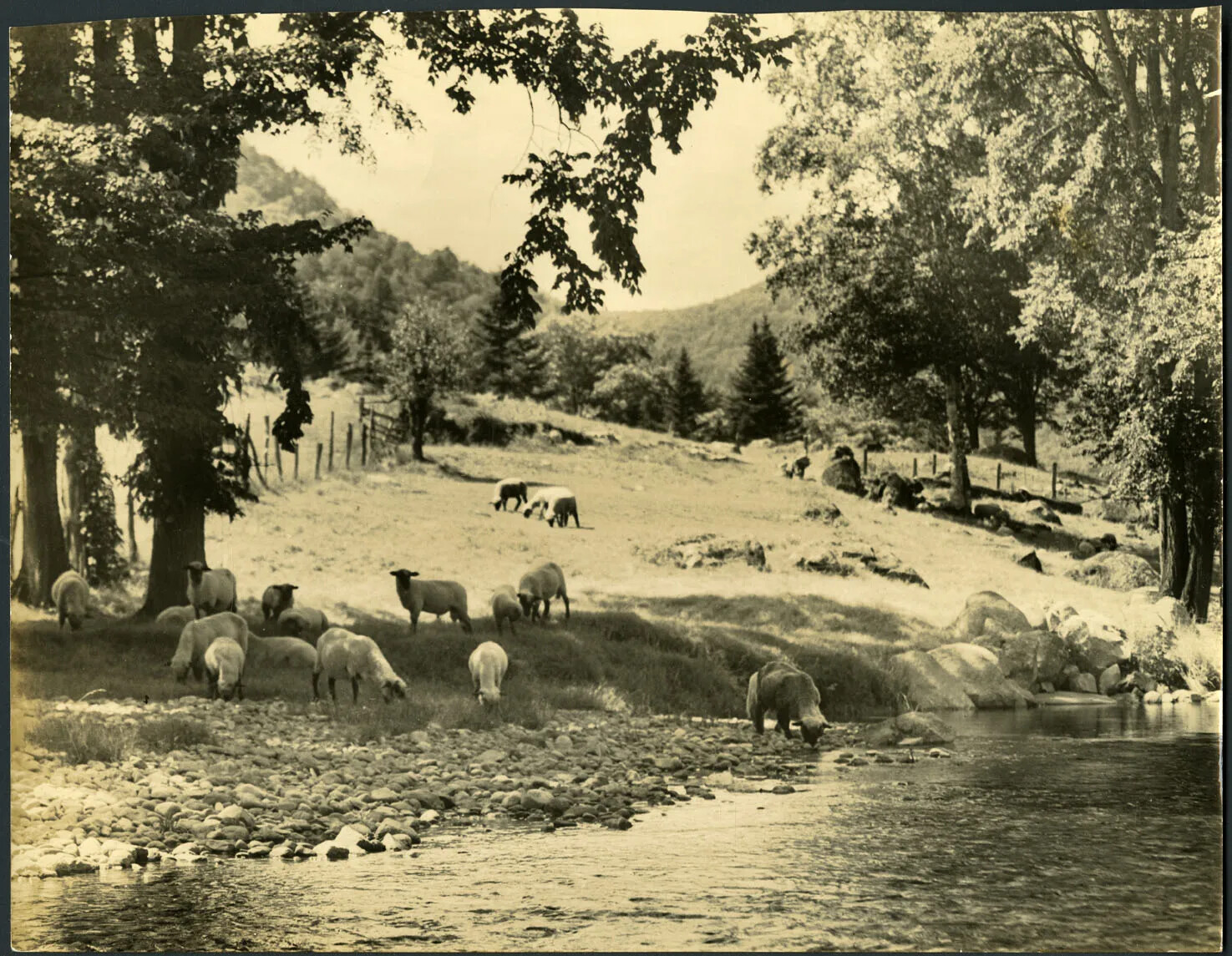
Caption:
Have you ever noticed old stone walls in your town or along country roads in New Hampshire? Many of them were built in the early 19th century to keep sheep penned in. There was so much sheep farming in New Hampshire that farmers were said to have "sheep fever." Many trees were cut down to provide land for sheep to graze on. By 1840 there were more than 600,000 sheep in New Hampshire. That's more sheep than people!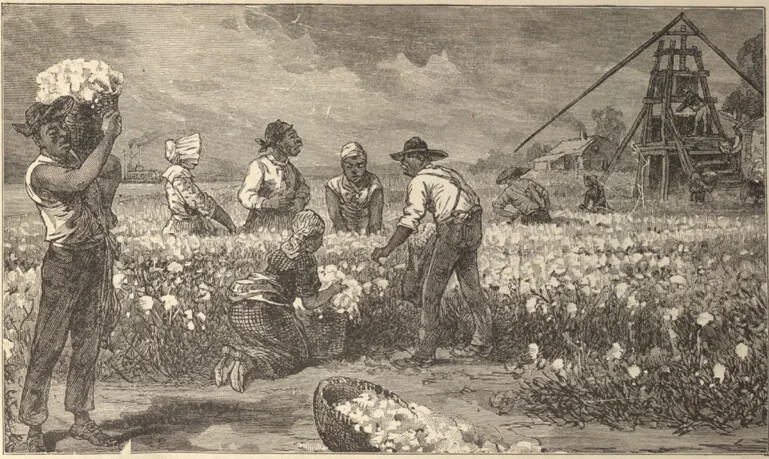
Caption:
Textiles, or making cloth, was the biggest industry in New Hampshire in the 19th century. At first the cloth was made from wool. Lots of farmers changed the way they farmed. They raised sheep instead of growing crops, and sold the wool to the factories. In the 1830s cloth made from cotton became more popular than cloth made from wool. The cotton was grown in the South and shipped to factories in New England. The cotton was grown on big plantations, and enslaved people planted and harvested it. Even after the Civil War, when slavery ended, the cotton was mostly farmed by Black people who were paid very little for their work.After the 1830s, cloth made from cotton became more popular than cloth made from wool, so farmers in New Hampshire gradually stopped keeping so many sheep on their farms. The cotton was shipped from the southern states, where cotton was grown on big plantations by enslaved people.
Textile factories still used wool but not as much as they had in the 1830s and 1840s. The Great Sheep Boom was over by 1860, but most farmers in New Hampshire still kept small flocks of sheep and sold the wool to textile factories until the end of the 19th century.
Farming practices during the Great Sheep Boom were very different than they had been before. When a farm converted to sheep farming, the farmers stopped being self-sufficient. They no longer made or grew most of the things they needed.
Instead, they used the money they earned from selling wool to buy the things they needed. With more people buying things like food and clothing, more stores opened to meet the demand.
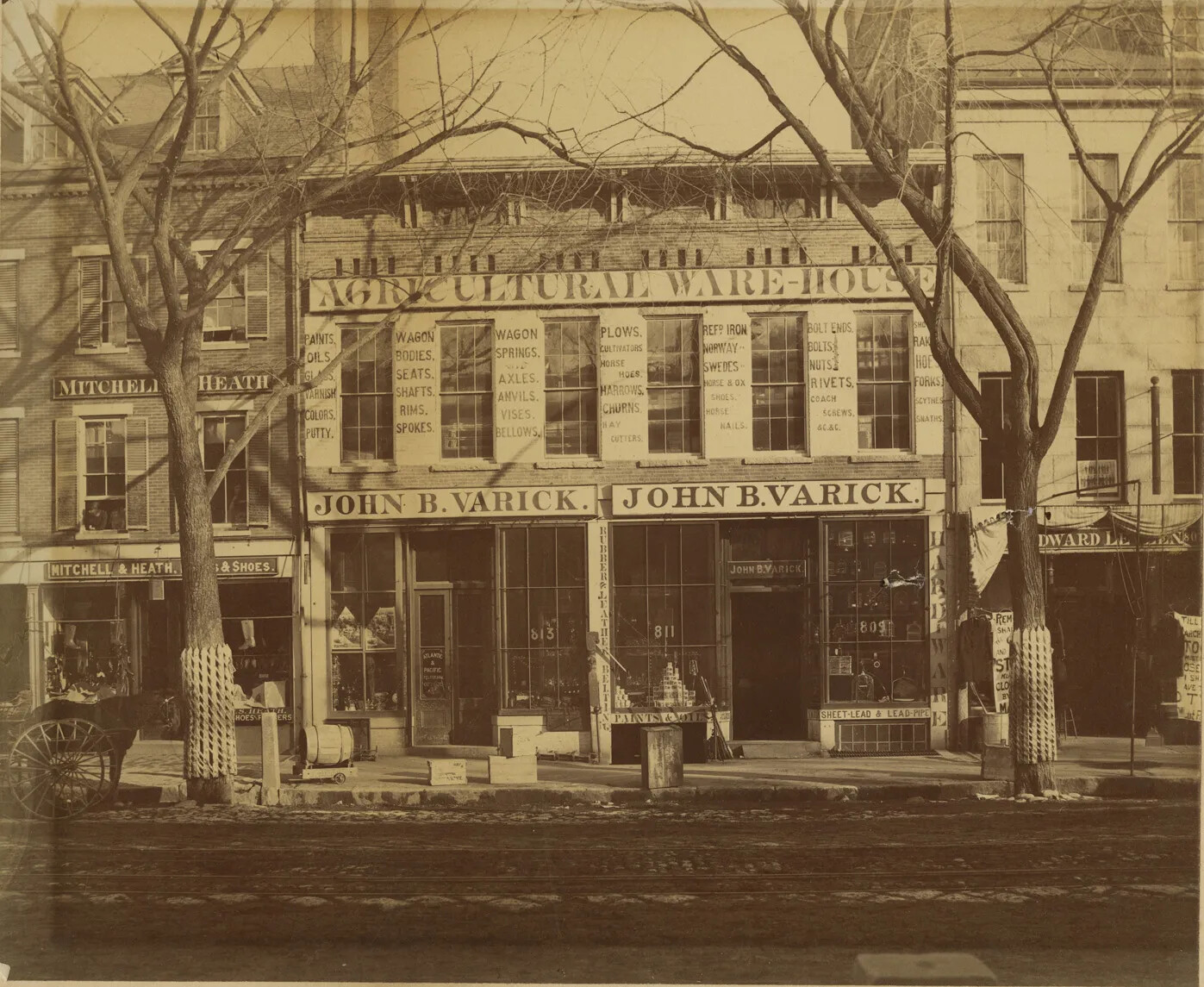
Caption:
John B. Varick Company had the largest store in Manchester, NH. It opened in 1845 in just one building on Elm Street. By 1920 it had expanded to include several buildings on either side of the original one. It also had a second store in another part of Manchester and two warehouses. Varick's store was known for its hardware, but it also sold farming equipment and seeds, fishing gear, paint, sports equipment, jewelry, firearms, and even toys.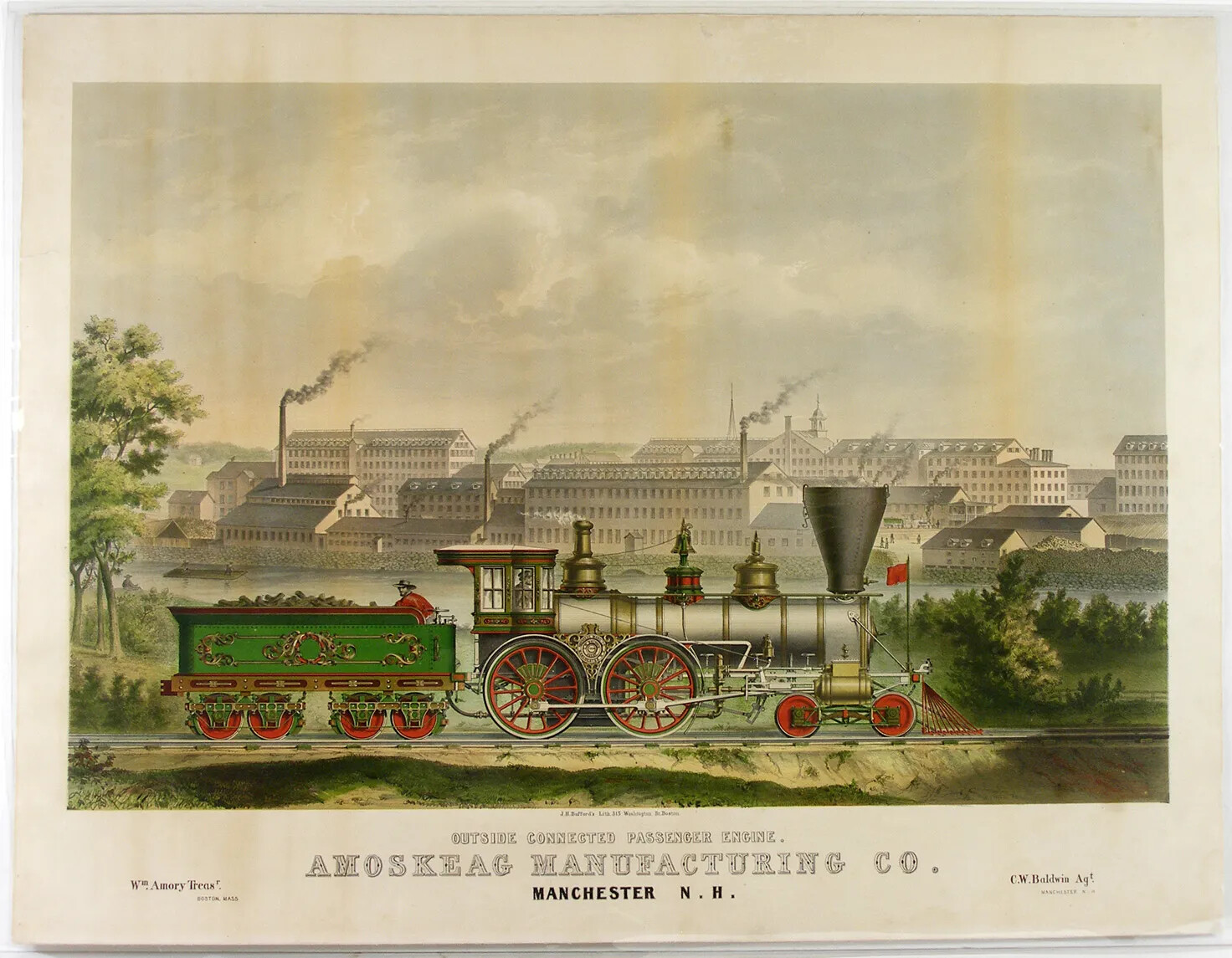
Caption:
The Amoskeag Company manufactured more than textiles over the years. They also made locomotives, fire engines, sewing machines, and rifles. The Amoskeag Company had a big machine shop where they made all of their own machines for producing textiles. When railroads started growing all over the country in the 1840s, Amoskeag Company decided to make locomotives too. A locomotive is an engine that moves by its own power. Locomotives are the train cars that pull all the rest of the cars. The first Amoskeag locomotive was finished on March 1, 1849. They made 234 steam-powered locomotives by 1858, when they decided to make fire engines instead.Caption:
The first railroad tracks were laid in New Hampshire in 1838. The tracks ran from Nashua south for 5 miles before crossing the Massachusetts border and continuing on to Boston. Within less than 10 years, the Boston, Concord, and Montreal Railroad had built railroads throughout the southern part of the state. Because people could travel faster and easier by train than any other form of transportation, having railroads in New Hampshire made people in different towns and communities feel more connected to one another.While the Great Sheep Boom was going on, railroads came to New Hampshire, which linked towns all over the state. The railroads gave farmers a way to sell their wool to factories far away from their farms.
Railroads also brought to rural communities food and goods that had come from somewhere else. All of these transactions were made with money, which was another way New Hampshire changed in the early 19th century. Instead of farmers trading with their neighbors for things they needed, they started using currency to buy what they needed.
The Great Sheep Boom meant that farmers were dependent on the economic market in a way they weren’t before industrialization.
Let's Review!
What are the big ideas in this section?
Industrialization
In the 19th century, factories changed the way people made things and gave people a way to earn their living other than farming.
Making Textiles
Many NH factories created textiles, like cloth. Cloth was made out of cotton, which came from the South, or wool, which came from sheep that lived on New England farms.
Great Sheep Boom
Most NH farmers stopped growing crops and instead began to raise flocks of sheep to produce wool for the factories.
Stone Walls
NH farmers built stone walls around pastures to keep the sheep on their land. Most of the stone walls in NH were built in the first half of the 19th century.
The Decline of the New Hampshire Farm
Why did people leave their farms in the second half of the 19th century?
When the Great Sheep Boom ended in the late 1850s, New Hampshire farmers tried to find new products they could make or grow to sell to people who did not live on farms. The 1850s were a hard time for farmers. Some of them gave up on farming and moved to cities so they could get jobs in the factories.
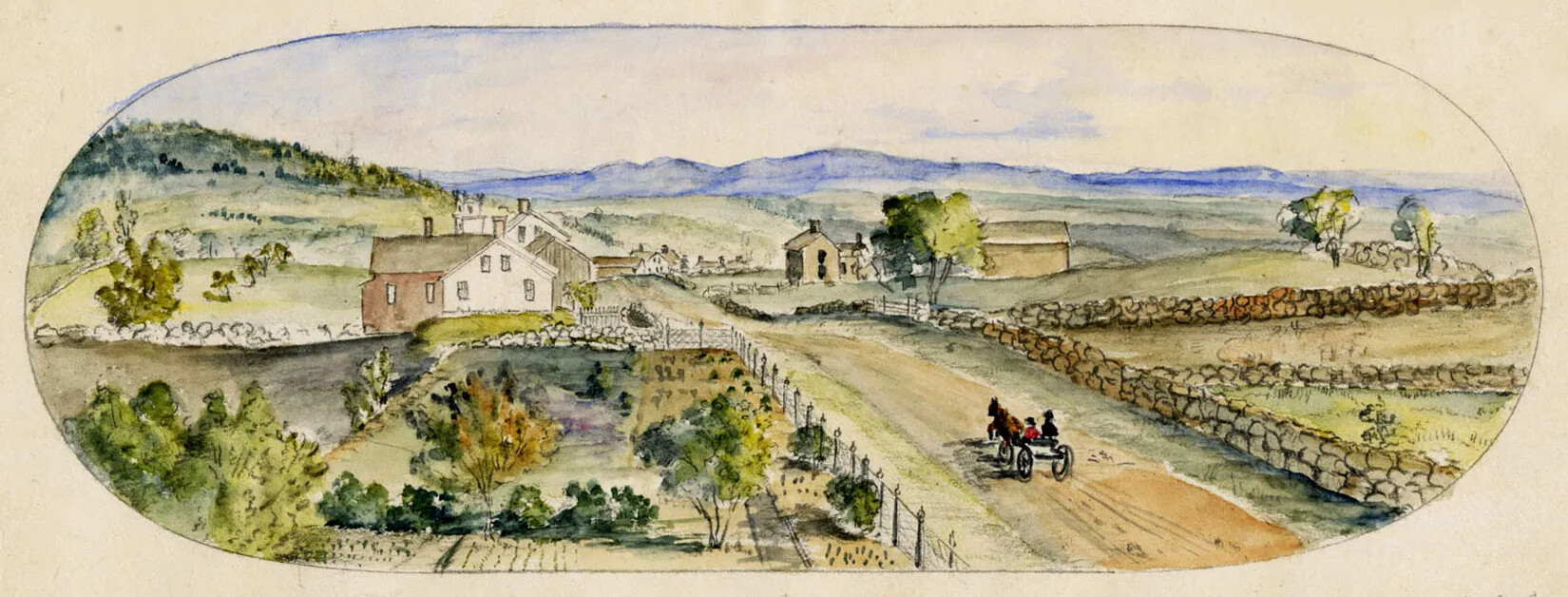
Caption:
The city of Manchester got bigger and bigger during the Industrial Revolution as more and more people moved there to work in the factories. By the middle of the 19th century, there were very few farms left in Manchester. Instead, food was grown on farms in surrounding towns, like the one in this painting, and brought to stores in the city.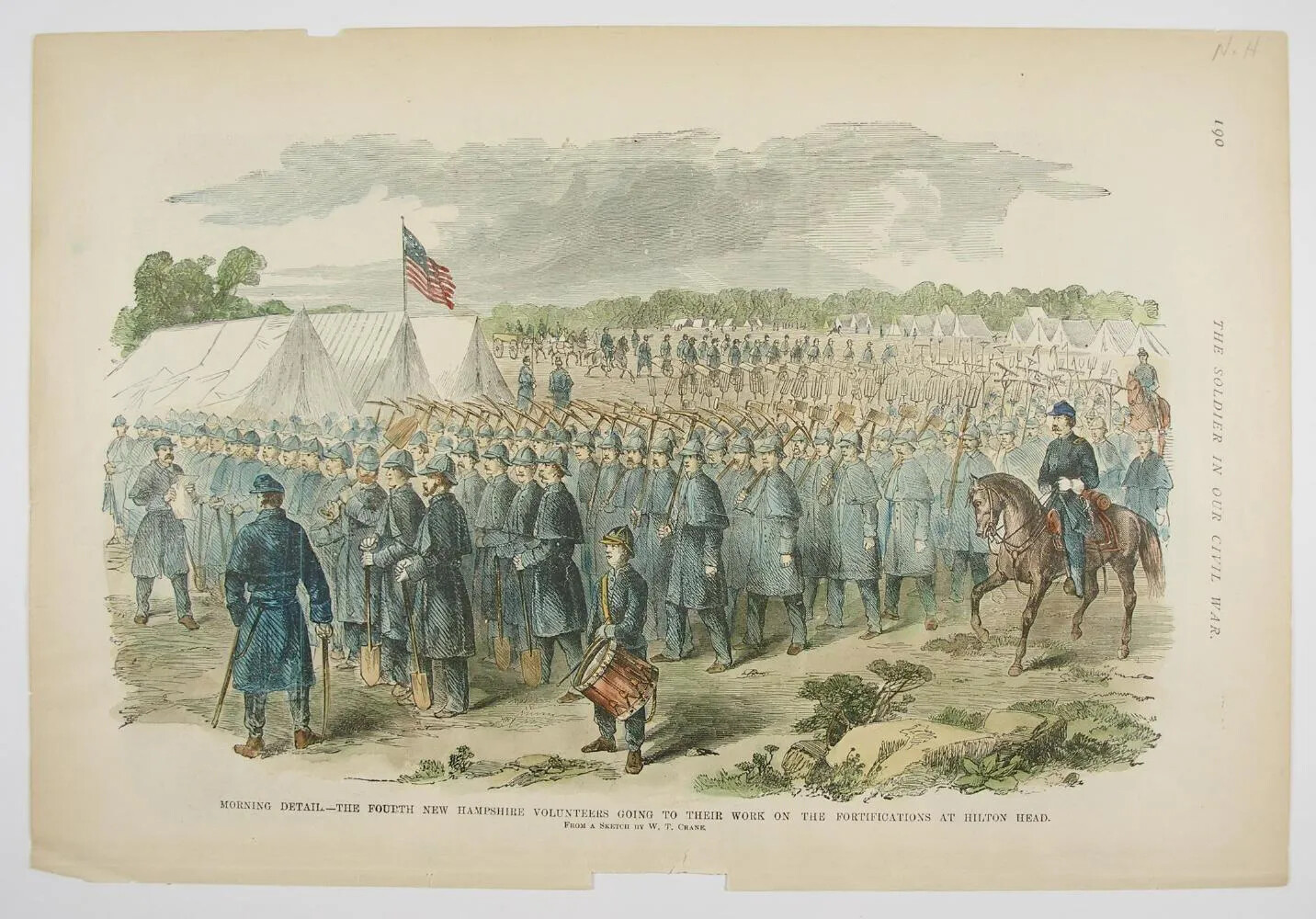
Caption:
When the Civil War began in April 1861, thousands of men from New Hampshire volunteered to fight in the U.S. (Union) Army. This group of soldiers was stationed in South Carolina. In this picture, they are reporting for their morning duties. The picture is from a book written about the Civil War in 1890.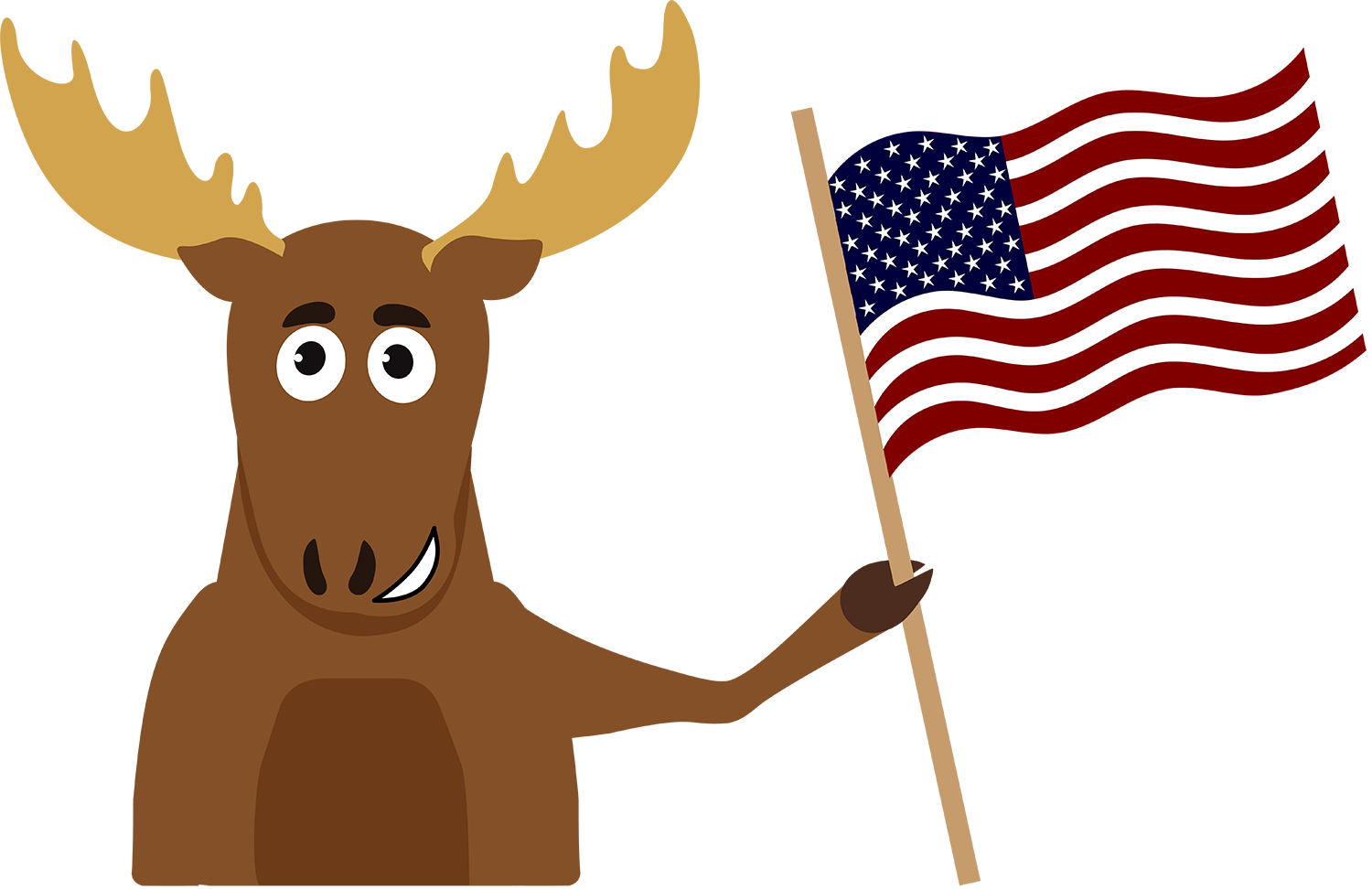
Between 1861 and 1865, Americans fought a civil war, when people from the southern states fought against people in the northern states. This war was about slavery, which was legal in the southern states at this time. Slavery is a labor system that forced many Black people in the South to lose their freedom. They had to do what white slaveholders told them to do. People in the South were worried they would not be able to stop northerners from ending slavery and that the federal government would declare slavery illegal in all states. The southern states decided to rebel and form their own country instead. Hundreds of thousands of people died in the Civil War, but eventually the federal government won and brought the country back together again.
Then, in 1861, the Civil War broke out between the northern states and the southern states. Nearly 34,000 men from New Hampshire fought in the Civil War, and most of them had been farmers before they became soldiers.
When the war was over, the men came home, but many of them realized they didn’t want to farm in New Hampshire anymore.
Some of them had seen other parts of the country during the war and realized that it might be easier to farm some place else, like the Midwest or the West. The soil conditions were better further west, and the growing season was longer there. In fact, farmers in the Midwest had started producing crops like wheat, rye, and corn and shipping them to the East by the railroad.
It was cheaper for people to buy these crops from Midwestern farms than it was to buy them from farms in New Hampshire, so Granite State farmers needed to find new products to grow and sell.
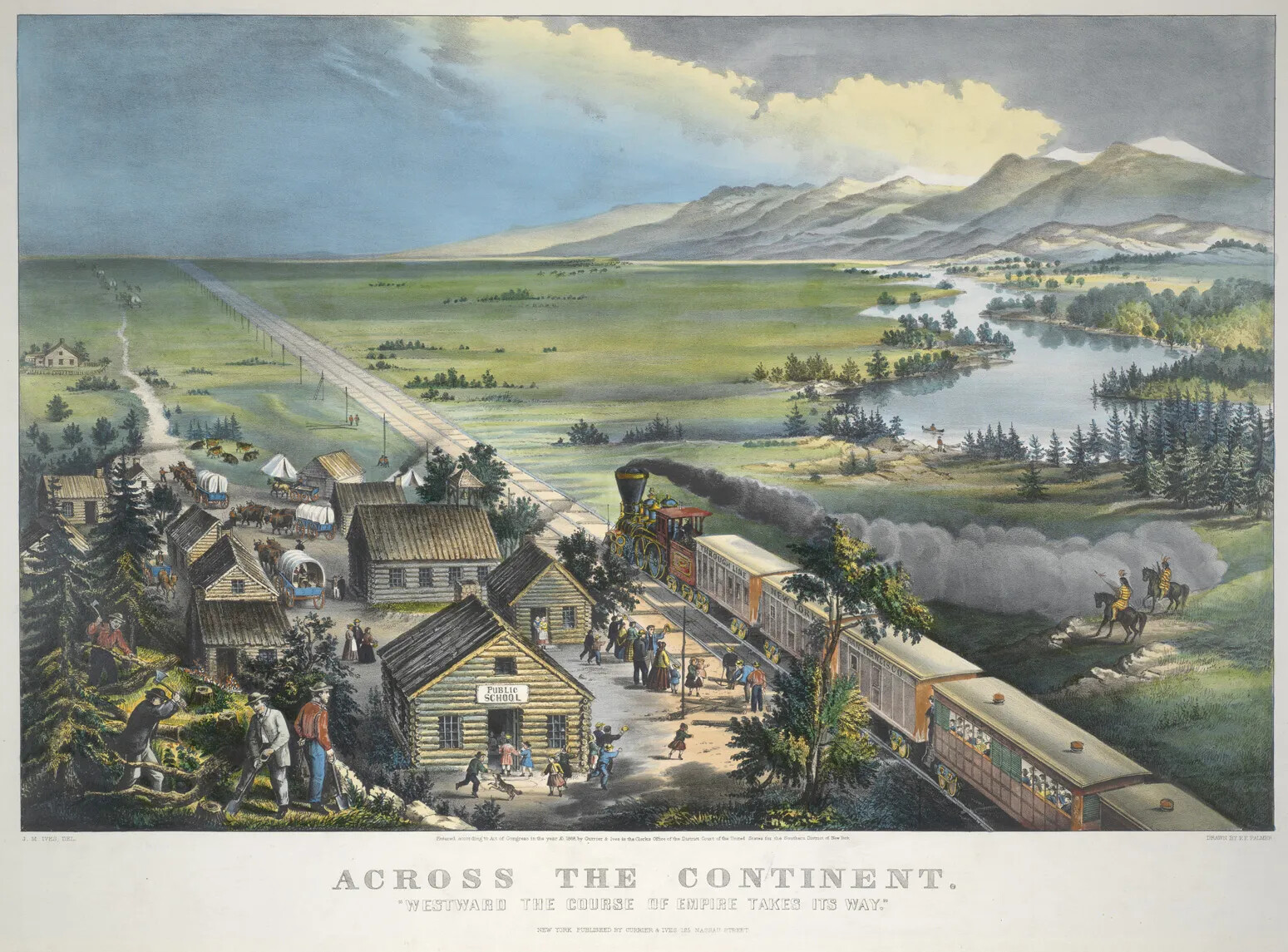
Caption:
In the years after the Civil War, many people from New Hampshire moved west. The farmland was much better in places like Ohio, Nebraska, and California than it was in New England. The railroads made farming profitable, because crops like corn and wheat could be shipped to markets in the East. This painting shows a new town built along the railroad somewhere in the Midwest.
So many people left the Granite State in the second half of the 19th century that people in western cities like Denver or San Francisco started to form clubs called the Sons of New Hampshire. They would get together and share memories of living here or news about friends and family still in New Hampshire. Sometimes they would even send money back to New Hampshire towns to build a project like a library or a statue.
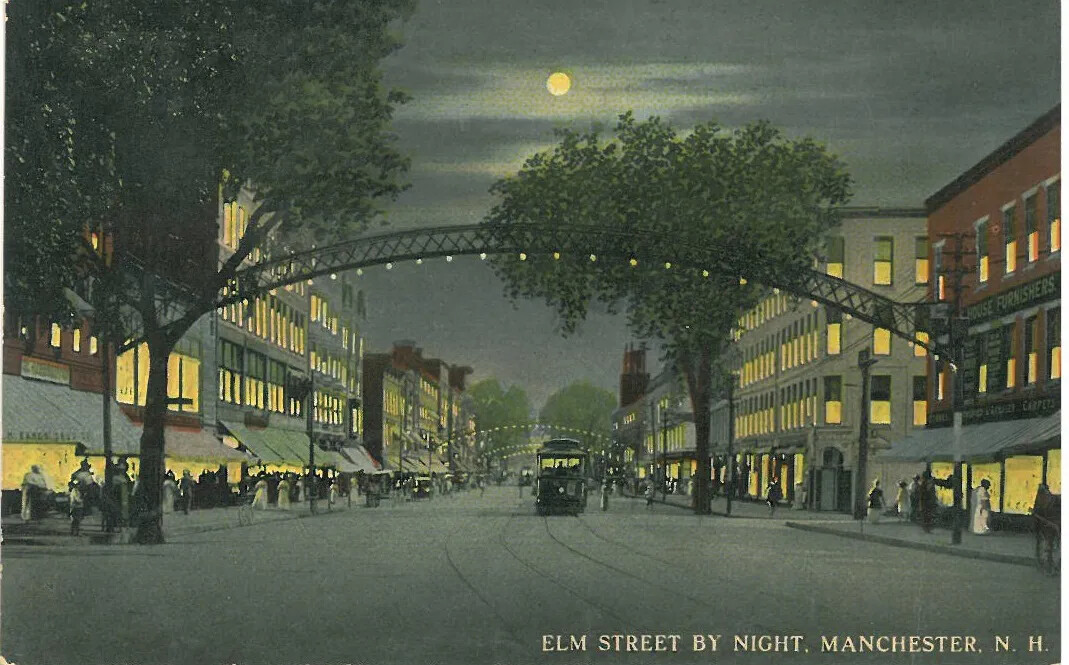
Caption:
New Hampshire's cities grew quickly during the Industrial Revolution! Manchester became the largest city in the state, and it is still the largest today. Life was very different in cities than in farming towns. There were all sorts of places for entertainment and shopping. New technology, like electric lights and streetcars, meant that people could go out in cities at night.Other people in New Hampshire left farming altogether and got jobs in the cities as factory workers or laborers. For most people, life in the cities was more exciting than life in rural communities.
In the cities, there were lots of stores and restaurants. There were also theaters, parks, and other forms of entertainment. By the end of the 19th century, the cities also had electricity, which meant people could go out more easily at night and find fun things to do and see.
Fewer and fewer people were living in small New Hampshire towns. In a couple of towns, so few people lived there that the towns stopped being considered towns at all.
Although most people tried to sell their farms to someone else, many people just walked away from their farms when they moved elsewhere. In fact, the state of New Hampshire sold many abandoned farms to people from cities like Boston and New York who were looking for summer homes.
The deserted farms became vacation homes, which supported the growing tourist industry.
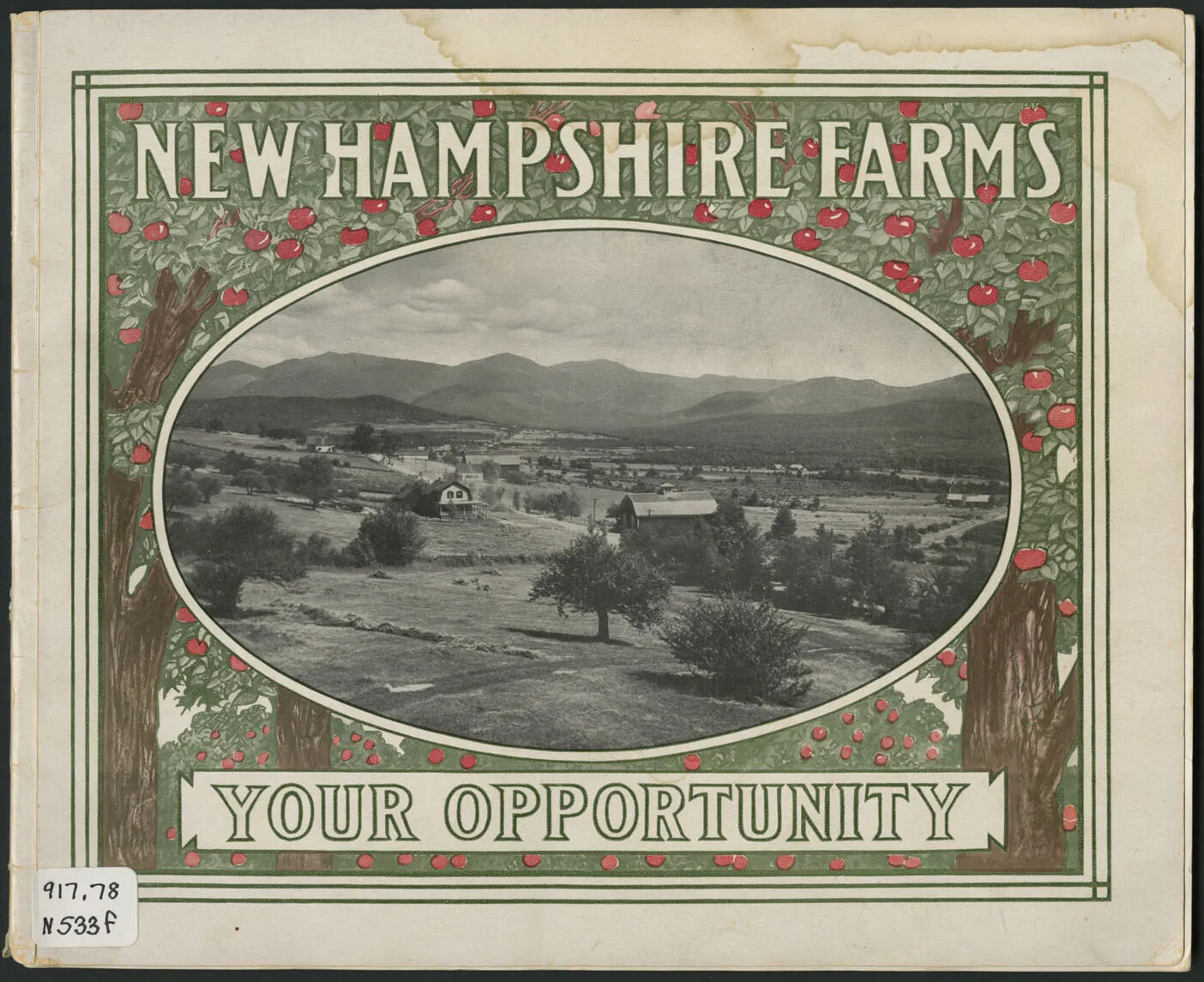
Caption:
Many people left New Hampshire in the 1800s as they discovered cheaper, better farmland further west. The railroads also made it easier and cheaper to travel to the west. Many farms were abandoned during that time, so the state government used to publish a brochure encouraging people from big cities like New York and Boston to buy them as summer homes.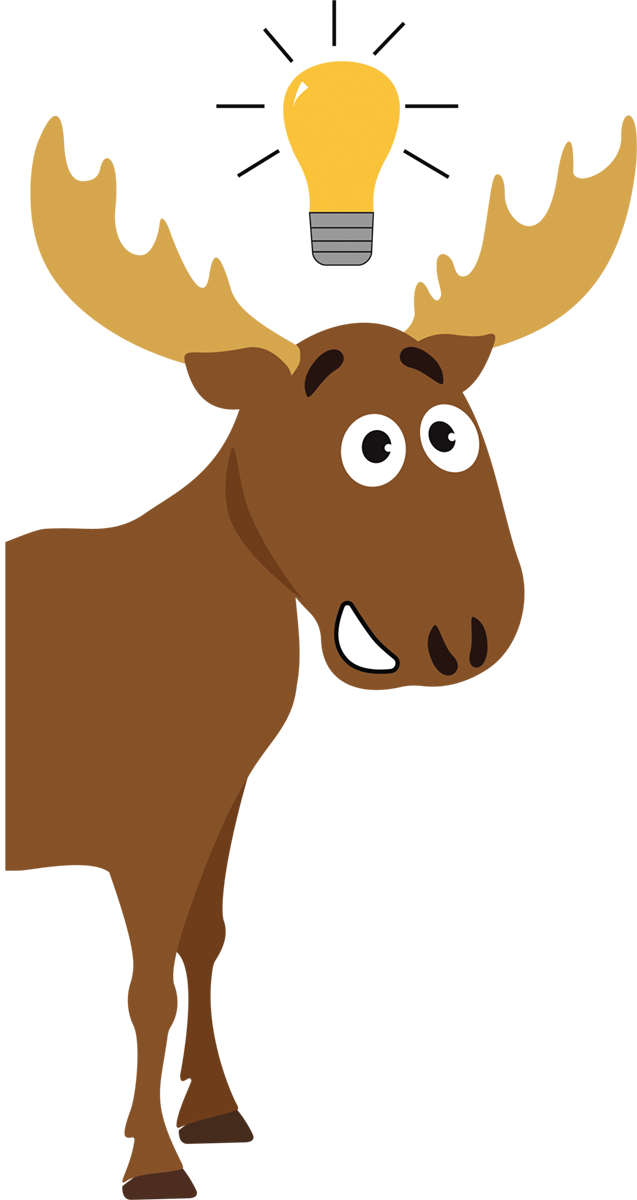
There were so many abandoned farmhouses in New Hampshire at the end of the 19th century that the state started to publish a booklet called Farms for Sale. People from Boston, New York, and Philadelphia bought these abandoned farmhouses and turned them into summer homes so they could come and enjoy New Hampshire's beautiful scenery while hiking, boating, fishing, and swimming in the state's great outdoors.
Let's Review!
What are the big ideas in this section?
End of the Great Sheep Boom
After the Great Sheep Boom ended, farmers needed to find other goods to produce and sell.
Farmers Move West
Some farmers moved to the Midwest or West where farming was easier.
Farmers Move to Cities
Many farmers took jobs in factories and moved to cities where life was more exciting.
Abandoned Farms
So many farms were abandoned in the late 19th century that people from Boston or New York started buying them as summer homes.
Finding New Markets
How did rural life change in the late 19th and early 20th centuries?
The people who stayed on the farms had to find new products to sell. Most farmers in New Hampshire started producing dairy products, like milk, cheese, and butter. Farmers used the railroads to send all these goods to cities, where the goods would be sold since people in the cities didn’t produce their own food.
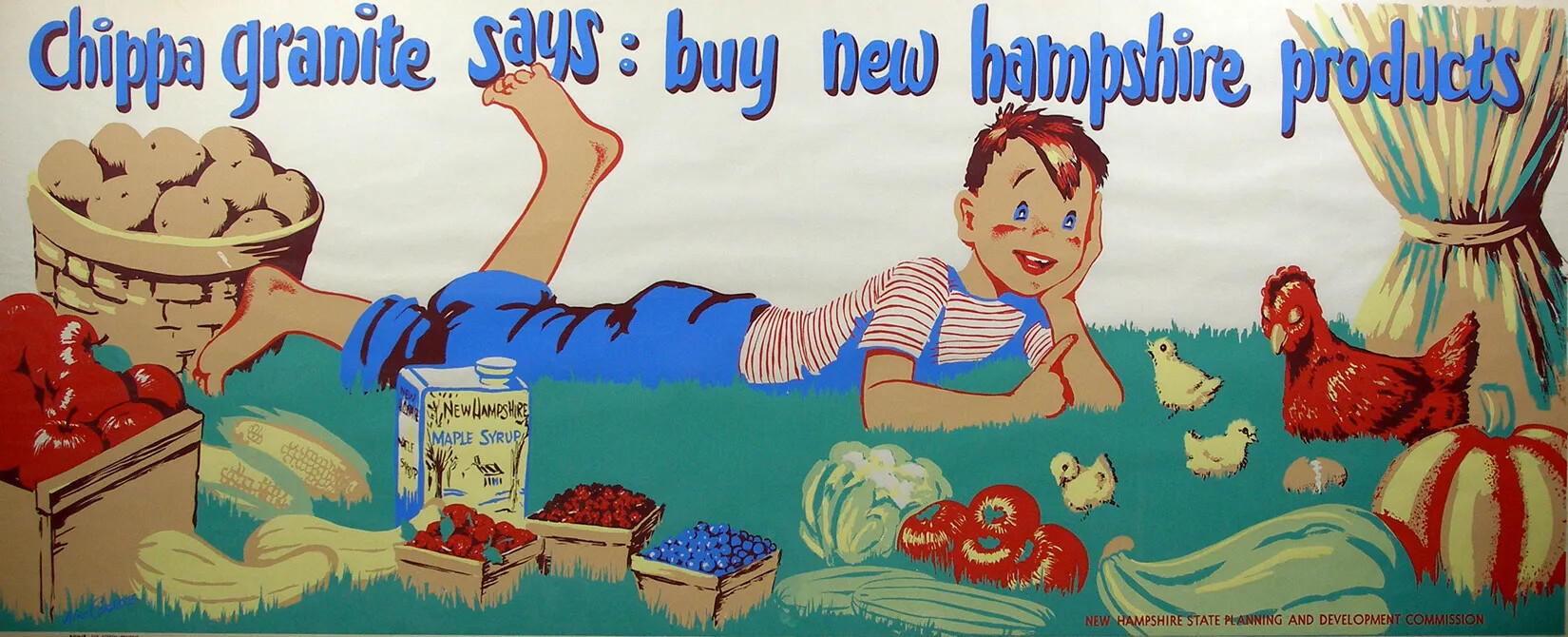
Caption:
Chippa Granite was a character created by New Hampshire state artist Alice Cosgrove in the 1950s. Chippa's image was used on posters, billboards, signs, and brochures. He encouraged people to visit New Hampshire and to buy New Hampshire-made products. Chippa Granite became a symbol of New Hampshire.
Caption:
After 1850, railroads could bring food from the rich farmland of the Midwest to New England. It was cheaper to do that than for New England farmers to grow food themselves. Many New Hampshire farmers moved to cities or to the Midwest or the west coast. Others shifted from growing grain to focus on other products, especially dairy. Dairy farming continues to be an important part of New Hampshire's economy today.The railroads got the farmers’ goods to market quickly, which was important. Dairy products go bad if they aren’t kept cold, and they didn’t have refrigerators in the 19th century or the early 20th century. The only way to keep these goods fresh was to pack them in blocks of ice, but even then, the ice wouldn’t keep the dairy products cold for very long. New Hampshire was close enough to Boston and New York to ship its dairy products there without them going bad.
New Hampshire farmers also produced other goods that had to be kept fresh, like fruits and vegetables. These crops grew well in New Hampshire’s soil—things like apples, berries, lettuce, and potatoes. The Midwest was too far away from the big cities in the East to supply these goods. The fruits and vegetables would get old and stale if they were shipped that far.
In the late 19th century and early 20th century the other big product that came from New Hampshire was ice.
The lakes in New Hampshire freeze into ice in the winter. People harvested the ice by cutting it into blocks and then stored the blocks in ice houses that were designed to keep the ice frozen as long as possible—sometimes even to the end of the summer!
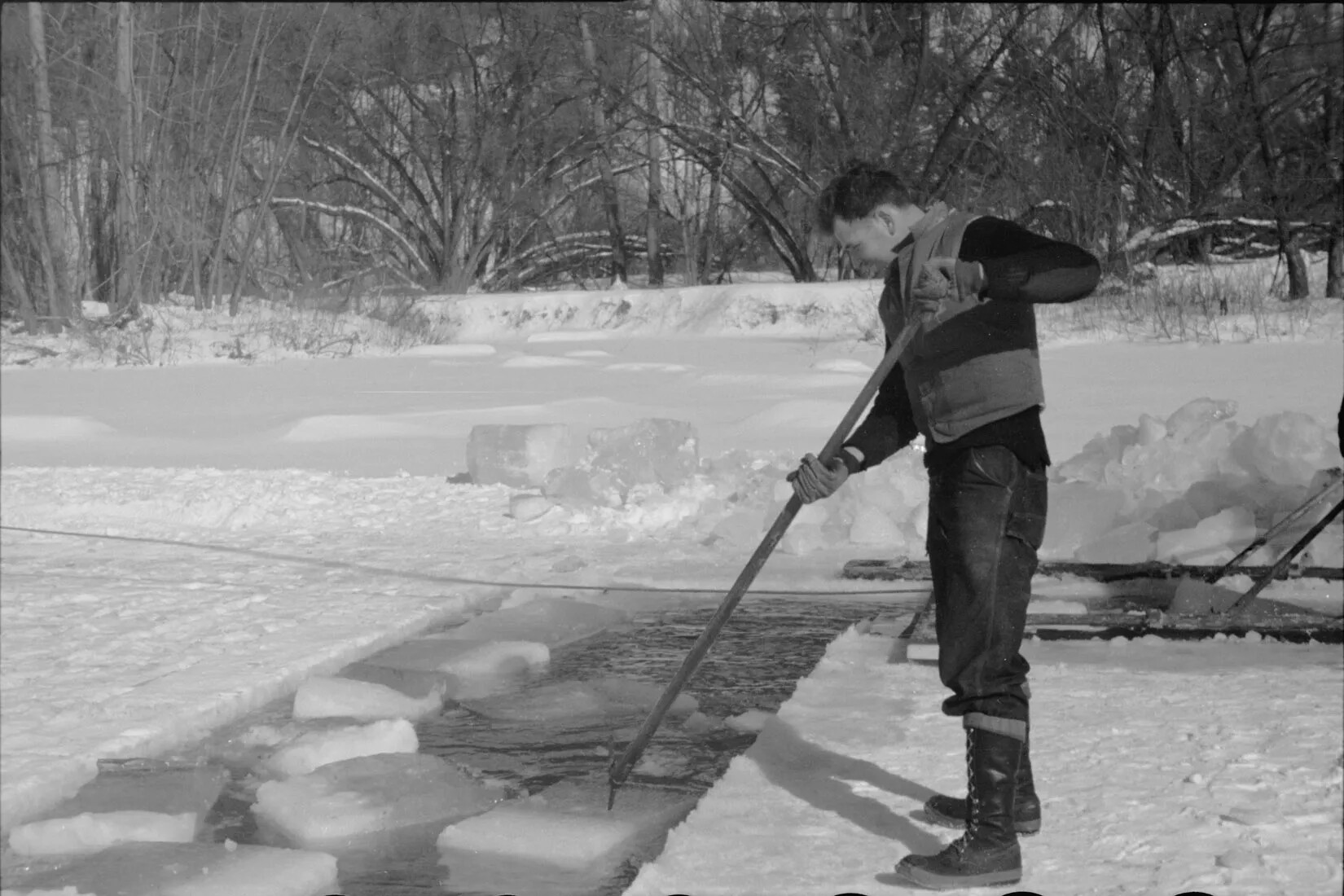
Caption:
Before refrigerators and freezers were invented, people harvested ice from New Hampshire's lakes and ponds and stored it year-round to keep their food cold. This is from a series of photos of an ice harvest in Coos County.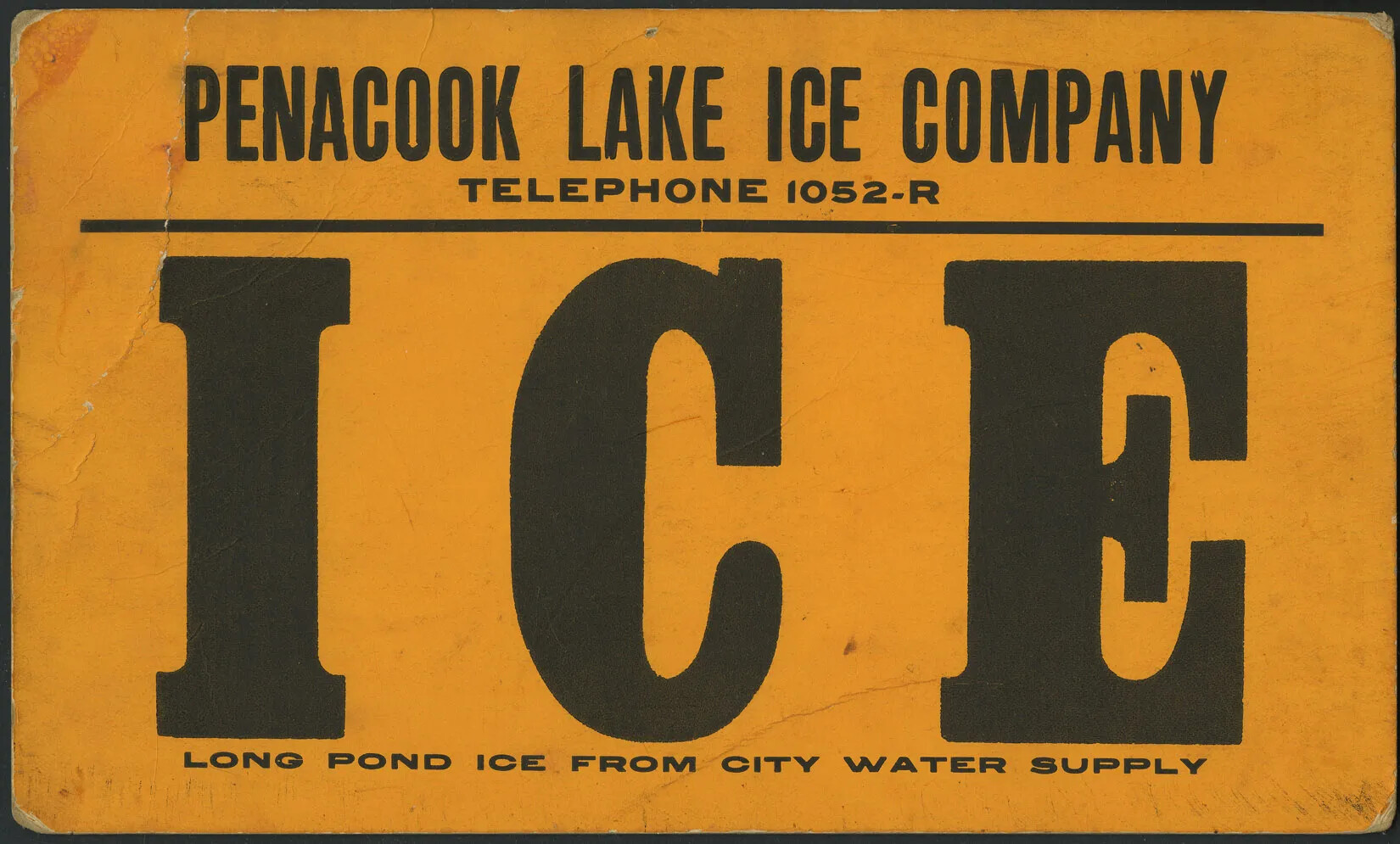
Caption:
Before electric refrigerators and freezers, people used iceboxes to store their food and keep it cold. Local ice companies harvested ice in the winter and stored it in icehouses year-round, then delivered it to their customers' homes each week.Since the refrigerator hadn’t been invented yet, people kept their food cold in iceboxes, which were cabinets lined with metal. There was enough room inside the cabinets to store both food and a block of ice. After a short period of time, the block of ice melted, and people had to buy a new block to keep their food cold. There was a constant demand for ice.
For many decades, New Hampshire sold blocks of ice all over southern New England, especially in Massachusetts. The ice trade declined after the 1930s when people started buying refrigerators for their homes. Refrigerators use electricity to keep temperatures cold, so blocks of ice were no longer needed to preserve food.
All of these goods—dairy products, fruit, vegetables, and ice—helped New Hampshire farmers survive in the late 19th century and early 20th century. Most of these goods made farmers enough money to feed their families, but they didn’t earn much profit.
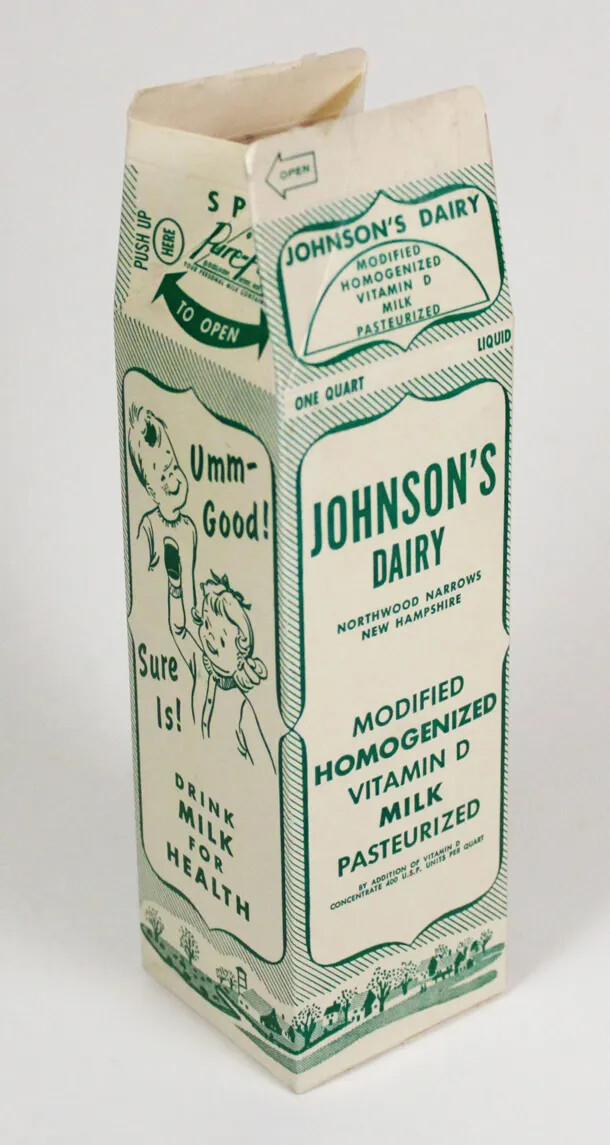
Caption:
Dairy farming has been an important part of New Hampshire agriculture since the middle of the 1800s. In the 1840s, New Hampshire farmers began shipping milk to markets in Boston by train. Later, farmers began to make butter for sale. Once freezer trains and trucks were invented, they made and sold ice cream too. Johnson's Dairy Barn in Northwood, NH, still sells ice cream today! Have you been there?Agricultural Clubs and Fairs. To make rural life more fun and social, farm communities started organizing clubs in the late 19th century.
The New Hampshire Grange was formed in Exeter in 1873. This group spoke out for more services in rural communities, like mail. The Post Office did not always bring mail to people who lived in the country. Instead, people had to come into the post office to pick up their mail.
Rural free mail delivery began in the late 19th century, thanks to the efforts of the Grange. This service brought mail right to people’s homes, even if they lived far away from a city or town center. The Grange also helped farmers share new ideas about farming and learn about new technology that made farming easier.
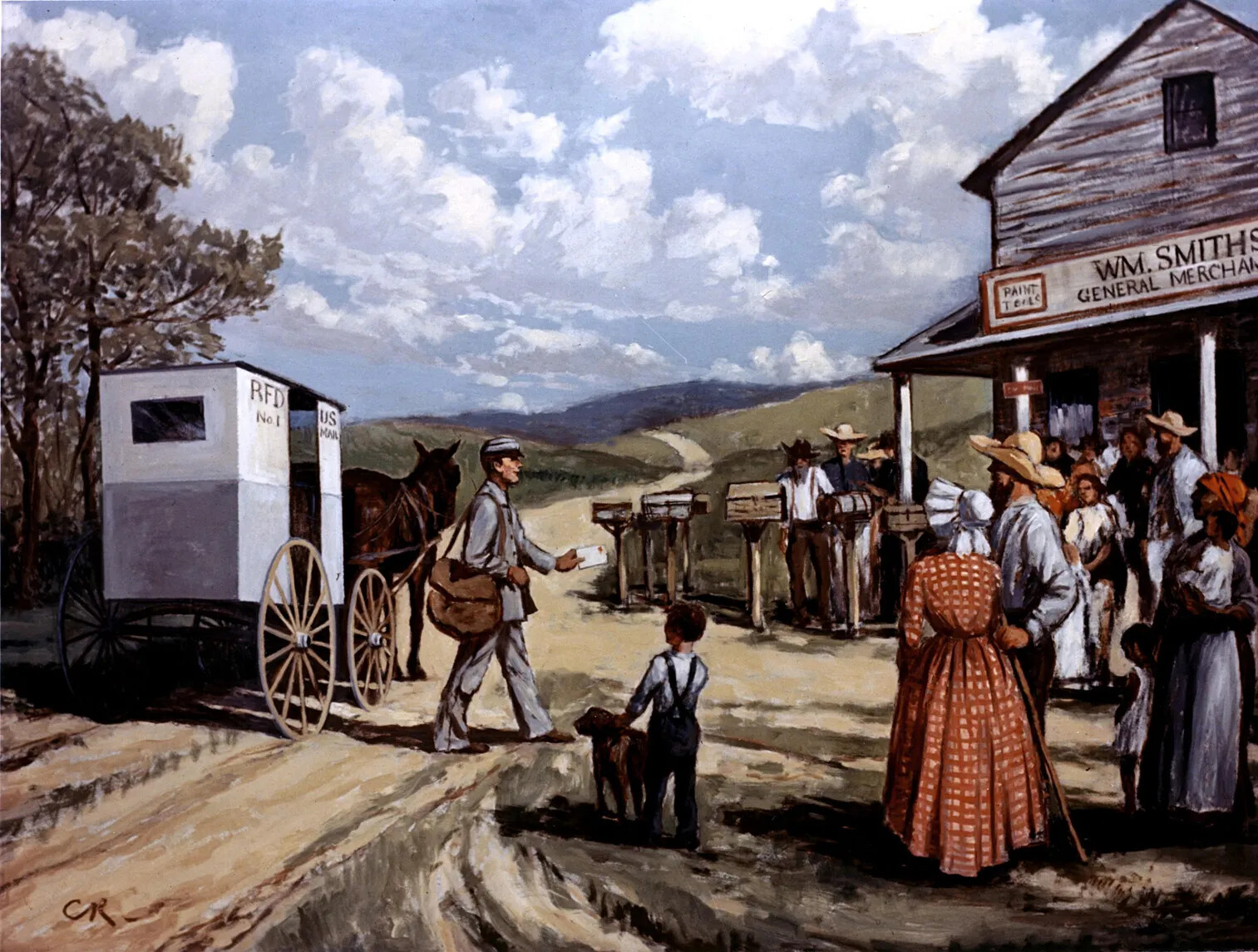
Caption:
The Grange is a national organization that works to improve the lives of people who lived in rural communities. It began in 1867. The Grange is very active in New Hampshire. One of the things that the Grange fought for was delivery of the mail directly to people who lived in rural areas. This program is called Rural Free Delivery (RFD). Before RFD, people living out in the country had to pick up their mail at post offices that might be far away, or pay a private mail carrier to bring it to their homes.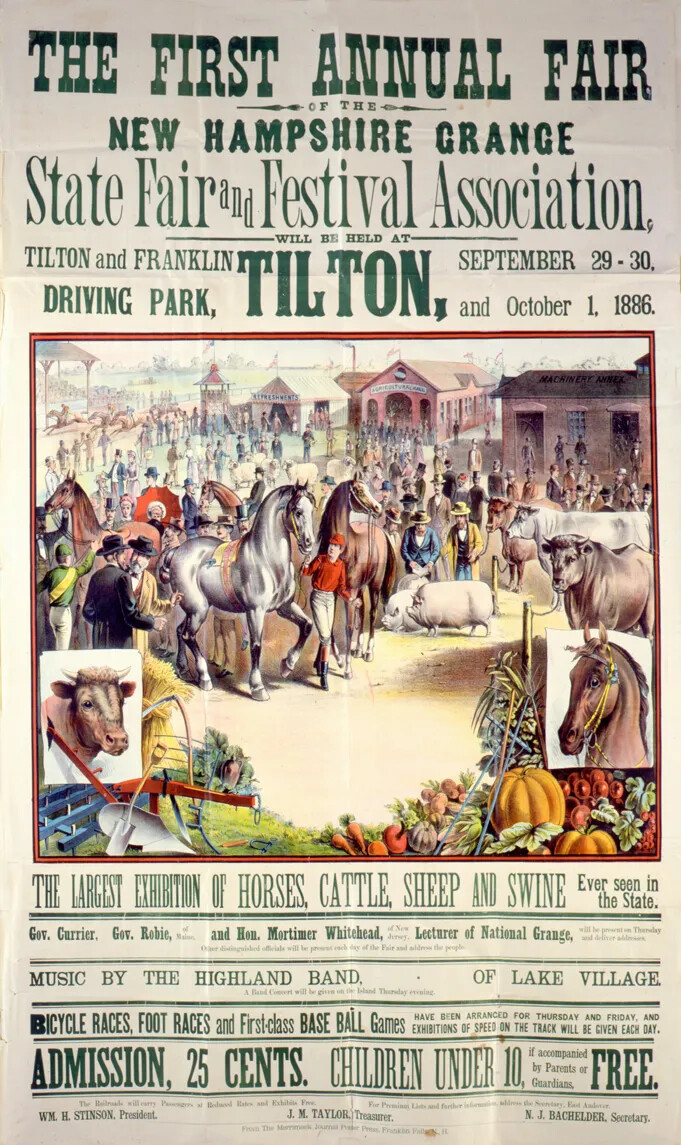
Caption:
Although fewer Granite Staters lived and worked on farms after the Industrial Revolution, agriculture is still a very important part of the state's economy and its history. New Hampshire's Grange was founded in 1873. The Grange is a national organization for farming communities. The Grange works with politicians of both parties to try and put policies and rules into place that are good for farmers. Local Grange chapters also work on community service projects and host social events, like agricultural fairs and festivals.The 4-H Club was a popular organization in New Hampshire. This group began in 1902 and encouraged young people to become interested in farming, agriculture, and raising livestock. 4-H encouraged future generations of farmers to stay in rural communities.
These clubs made farming more social. People would come together to discuss their farming practices but also to visit, share stories, and make friends. Sometimes groups like these held lectures, dances, or agricultural fairs. In fact, in 1886 the Grange organized the first state fair in New Hampshire, which was held in Tilton.
State fairs had all sorts of interesting things for people to look at and do, like competitions for who could grow the best or biggest plants and who could raise the strongest or most beautiful sheep, cows, horses, or pigs. There were usually performances or games, lots of food, and other attractions to keep people entertained.
Nowadays, agricultural fairs are held in New Hampshire’s counties, but they are much like the state fairs held in the 19th century.
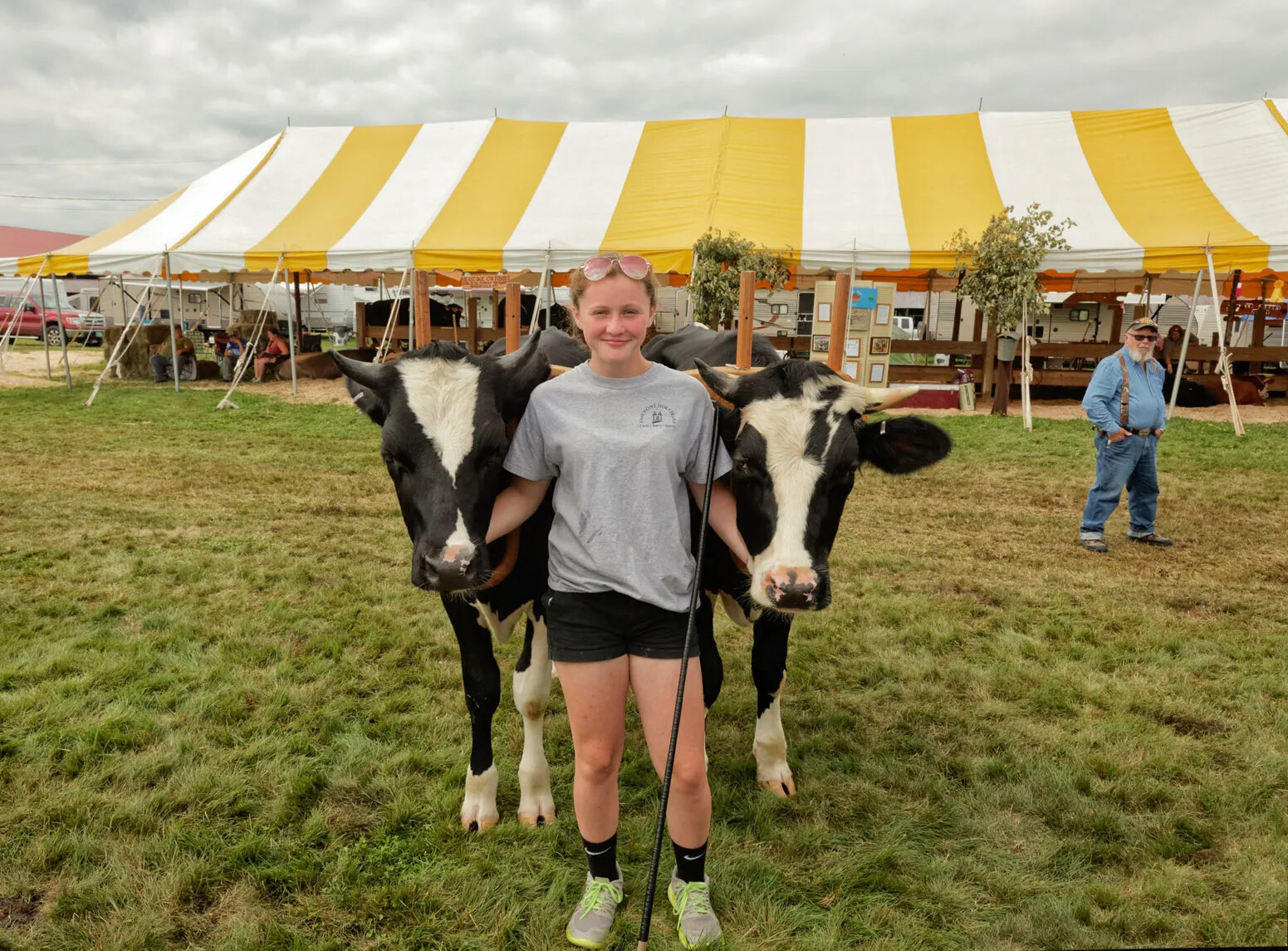
Caption:
Many agricultural fairs were held around the state in the 19th and early 20th centuries. These fairs were celebrations of rural life, with farm animal competitions, games, food vendors, and other fun activities. The Lancaster Fair began in 1902 and included horse racing and baseball games. Later there were car shows and circus acts, as well as live music. But whatever entertainment shows were held at the fair, there were always arts and crafts, baking contests, livestock competitions, and other opportunities to celebrate the traditions of rural life. In this photo, a girl shows her oxen at the 2018 Lancaster Fair.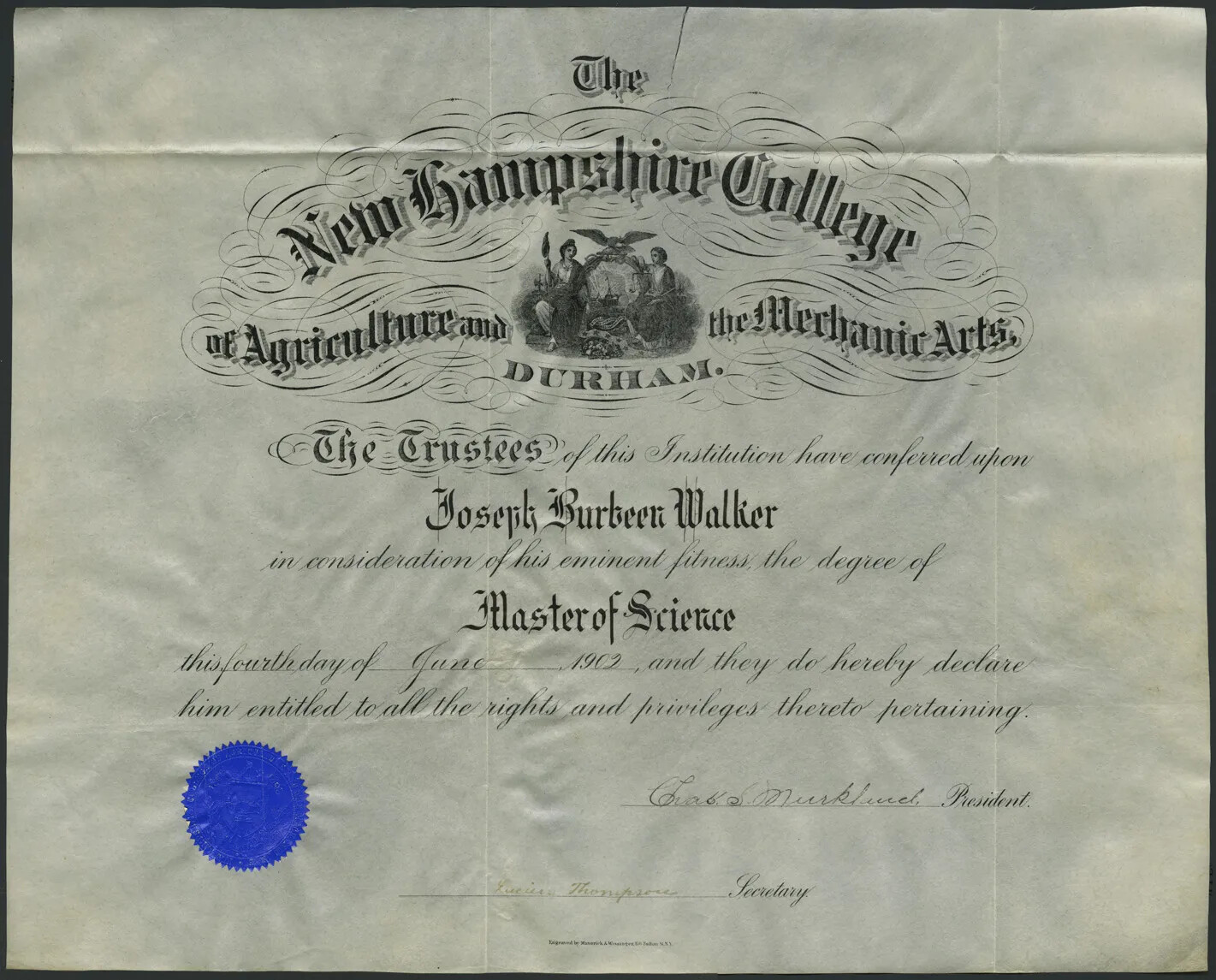
Caption:
The University of New Hampshire opened in 1866. Back then it was called the New Hampshire College of Agriculture and the Mechanic Arts, and it was part of Dartmouth College. Its purpose was to give the children of farmers and factory workers a college education. At first it focused on agriculture, and young people could take classes to study the science of farming. The first woman student enrolled in 1890. In 1893, the college moved to Durham, and in 1923 it changed its name to the University of New Hampshire. Now you can study all sorts of subjects at UNH, from accounting to zoology!An Agricultural College. New Hampshire opened its first agricultural college in 1866. It was called the New Hampshire College of Agriculture and the Mechanic Arts, and it was part of Dartmouth College in Hanover.
Agricultural colleges taught young people about the science of farming—things like soil conditions, the effects of weather, and good farming practices. In 1893, the college moved to Durham. In 1923, it changed its name to the University of New Hampshire.
Now, the University of New Hampshire teaches all sorts of subjects, but when it started, it focused on agriculture and farming.
Old Home Week. Another way to promote farm life in New Hampshire’s towns was Old Home Week, which was started in 1899 by Governor Frank W. Rollins. He wanted local communities to hold celebrations in their towns, with dinners, picnics, parades, concerts, and games. These festivals promoted rural life and state patriotism.
Caption:
Frank W. Rollins was governor of New Hampshire from 1899 to 1901. He is known for starting the tradition of Old Home Week when he was governor. He came up with the idea as a way to celebrate life in New Hampshire’s small towns, where most people lived by farming. Towns organized picnics, baseball games, parades, and dinners during Old Home Week and encouraged people who had moved away to come back and visit. The first Old Home Week was in 1899. Frank Rollins was also one of the founders of the Society for the Protection of New Hampshire Forests. This organization still exists today. It works to conserve forest land and make sure it is used wisely. Rollins State Park on Mount Kearsarge is named after Governor Rollins.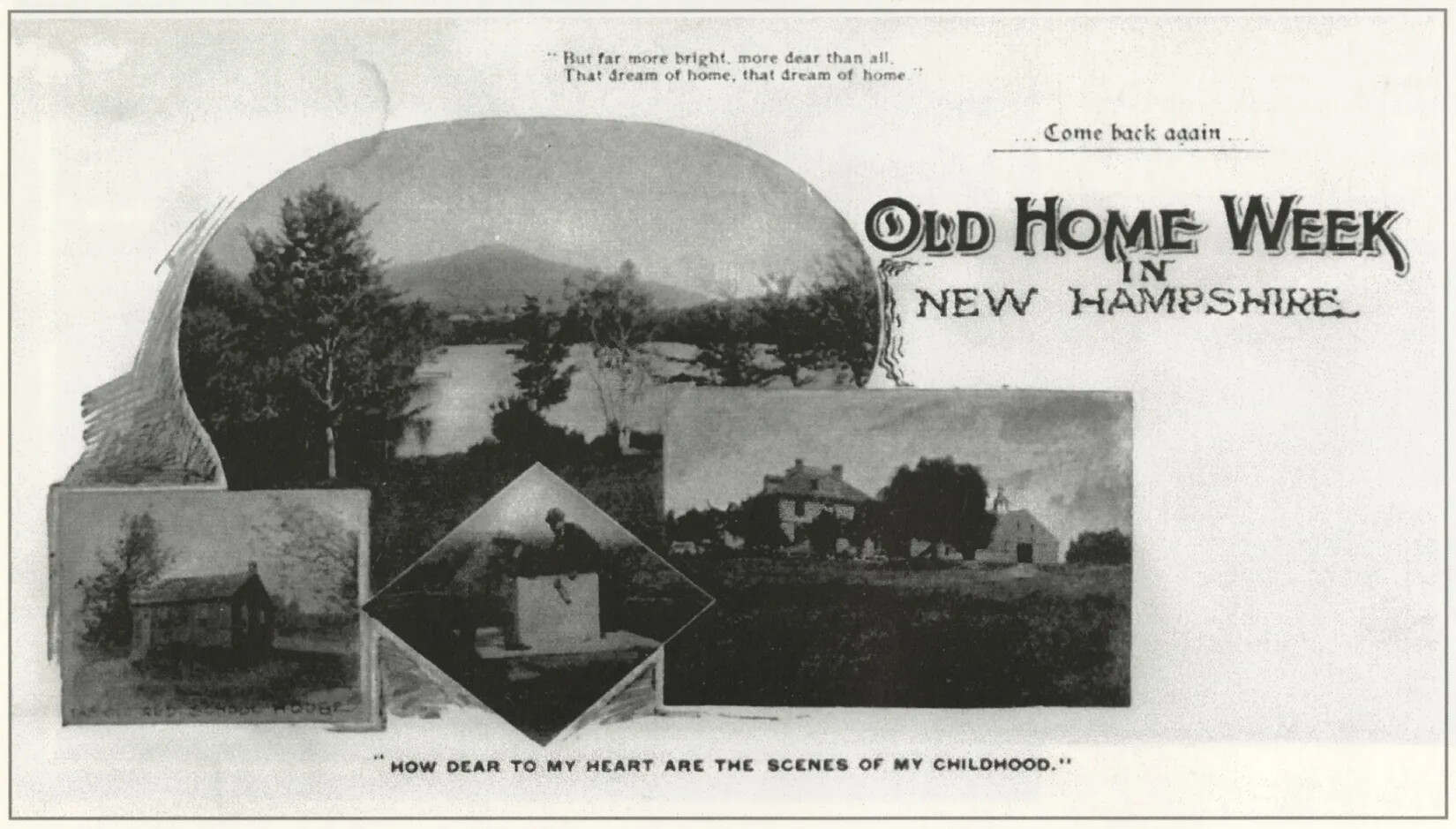
Caption:
Old Home Week is an important New Hampshire tradition. It started in 1899. Its purpose was to celebrate rural life and help people feel good about living in New Hampshire. Towns held celebrations over an entire week, with parades, dances, picnics, concerts, and games. They invited back everyone who had moved away from the town to visit their "old home." The idea spread throughout New England and across the country. Many New Hampshire towns still have an Old Home Day each year.Caption:
At the end of the 19th century, more people were moving out of New Hampshire than moving to it. People especially didn’t want to stay working on farms. Many of the state’s small towns saw a decline in their population. Governor Frank Rollins came up with the idea that every New Hampshire town should hold an Old Home Week as a way to celebrate their community. The townspeople in each community would decide how they wanted to celebrate, but most towns held picnics, concerts, baseball games, plays, dinners, parades, and fireworks. Rollins also encouraged towns to write letters to people who used to live there but had moved away, inviting them back again to see old friends at the celebration. When these visitors returned, they often donated money to the town to build a new building or create a park for the townspeople. New Hampshire towns stopped holding Old Home Week in the 1920s, but many began the tradition again in the 1990s or 2000s, only now the celebration usually lasts a day. Does your town celebrate Old Home Day?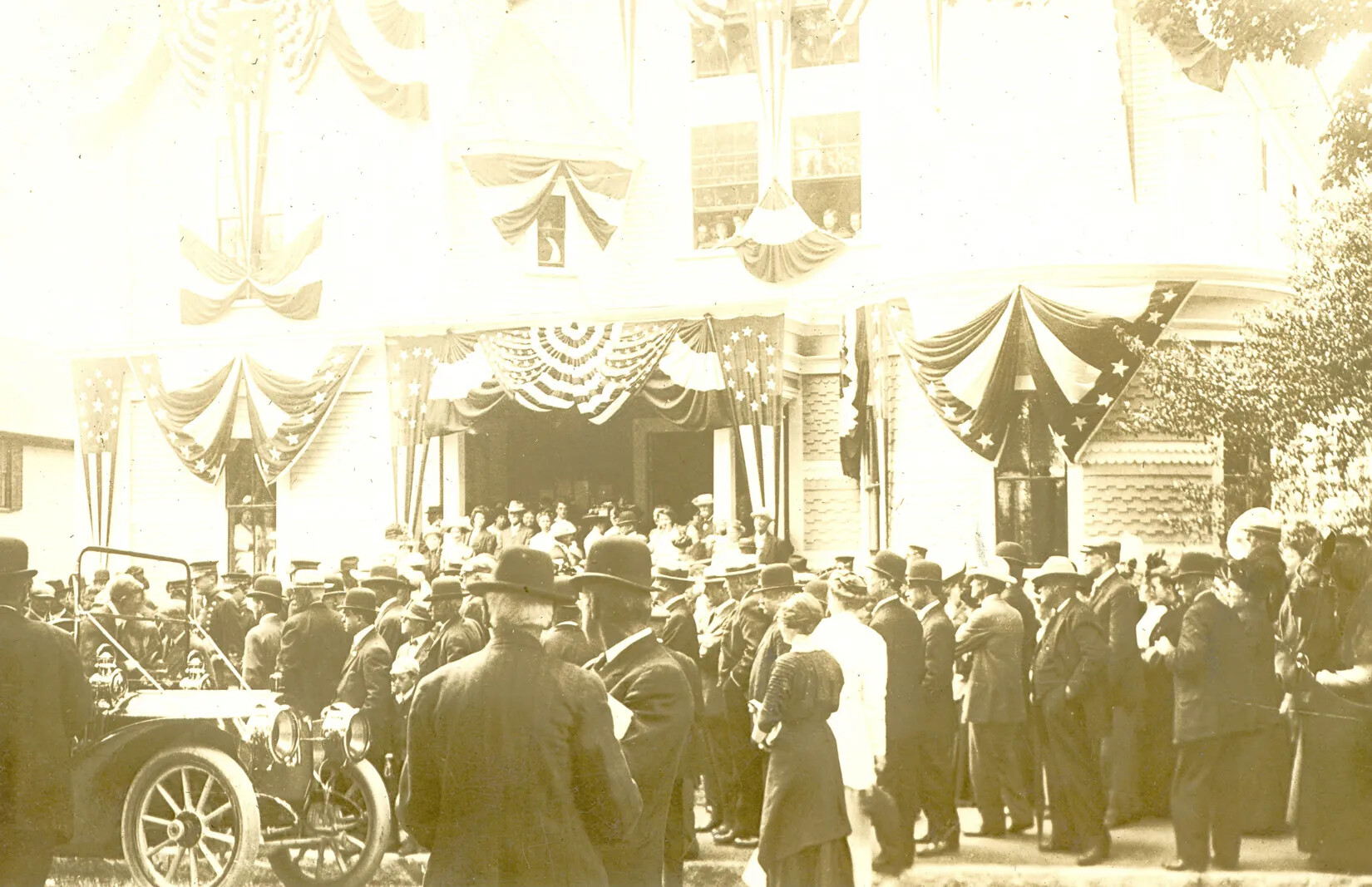
Caption:
Old Home Week is an important New Hampshire tradition. It started in 1899. Its purpose was to celebrate rural life and help people feel good about living in New Hampshire. Towns held celebrations over an entire week, with parades, dances, picnics, concerts, and games. They invited back everyone who had moved away from the town to visit their "old home." The idea spread throughout New England and across the country. This photo shows an Old Home celebration in Goffstown, New Hampshire.Governor Rollins hoped that some of the people who had moved away from their farms would come back to celebrate Old Home Week with their old friends and neighbors. When these people came and visited, they might even donate money to help the town build a library or a park.
Old Home Week was very popular in New Hampshire for about 20 years, and many towns celebrated it. These community festivals became popular again in the late 20th century as Old Home Days.
New Hampshire farms still struggled for most of the 20th century. It wasn’t until the late 20th century and early 21st century that farming became popular again when people became interested in picking their own fruit, like apples, blueberries, and strawberries.
Many people also became interested in buying their food directly from farms in the early 21st century, instead of buying it at stores. And restaurants became interested in working with farmers to bring food straight from the farms to their customers. This movement is called farm-to-table because the food is fresh from the farm and doesn’t go to a market first.
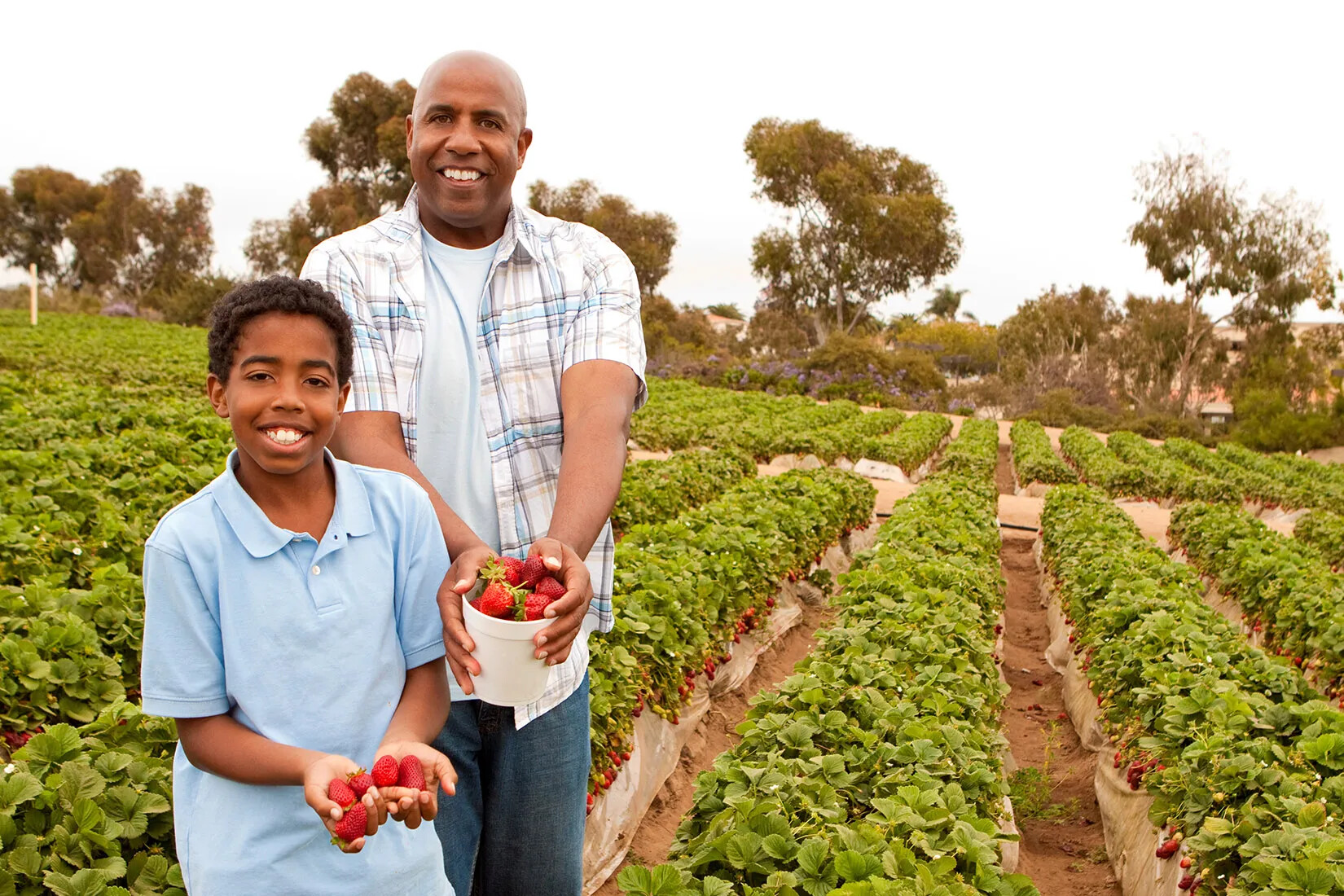
Caption:
Farming became popular in New Hampshire again in the late 20th and early 21st centuries. People became interested in buying their food directly from farms. Restaurants started to include more and more local food on their menus. And lots of people, both residents and tourists, started visiting farms to pick their own strawberries, blueberries, and apples. Have you ever gone to a pick-your-own farm?Let's Review!
What are the big ideas in this section?
New Products
In the late 19th century, NH farms began to focus on producing goods that needed to be kept cold, like dairy products and fruits and vegetables. These goods were sold in big cities in the East like Boston and New York.
Ice Harvesting
Before refrigerators were invented in the middle of the 20th century, NH produced blocks of ice that were sold all over the East. People used the ice to keep their food cold.
Making Farm Life More Fun
People tried to find ways to make farm life more exciting. They formed clubs, organized fairs, and started holding Old Home Weeks to give farmers ways to be more social.
Farming Today
Farming became popular again in NH in the late 20th century. Now NH farms produce food for restaurants and grocery stores. They also allow people to pick their own food, like apples and berries, and sometimes run stores to sell their goods.
Unit 8 Student Reading
A printable version of the student reading for this unit, without pictures or graphics.
